

Finding Ways to Save
By Andy Carter Member Engagement Manager
Trying to make paychecks go further has been on everyone’s mind. Inflation has dropped, but the latest Consumer Price Index for the past 12 months is 2.9%, which means prices are still going up. Empire Electric Association experiences the same inflation pressure as its member-owners. Cost of the equipment and services we use to provide safe and reliable power continues to increase.
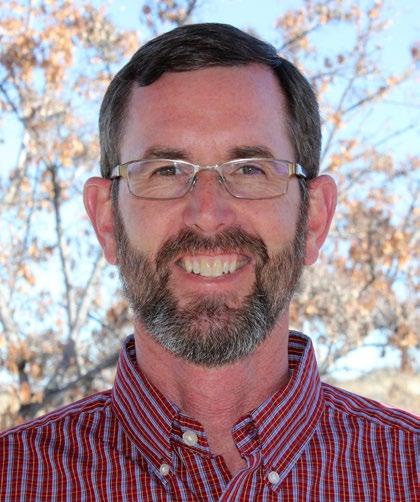
Just like you, we at EEA are always looking for ways to make the co-op’s dollars go further. Two ways you can help us reduce costs and keep rates lower are by choosing how we send your monthly billing statement and how you pay it.
Postage and printing costs continue to climb. EEA spent $116,000 in the last 12 months printing and mailing monthly statements to members. EEA offers a paperless billing option where, instead of receiving a paper bill in the mail, you receive an electronic notice. You can choose to be notified by email or SMS text message. An electronic copy of your billing statement is available along with other usage information on SmartHub, EEA’s online member information platform. SmartHub can be accessed using a computer and a web browser, or there is an app available for Apple and Android mobile devices. You can find out more at eea.coop/smarthub-tips. Sign up for paperless billing in SmartHub in the Settings menu or by calling EEA at 970-565-4444.
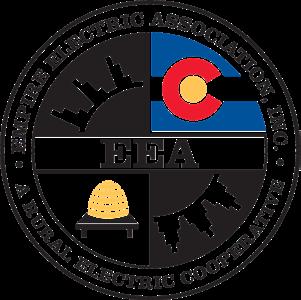
How you pay your bill also has an impact on EEA expenses. EEA spent $309,000 in the last 12 months receiving and processing payments for monthly billing statements. The most expensive method per transaction was our lobby kiosk. Although only 0.5% of transactions were made at the kiosk, it accounted for 19% of our expenses. EEA discontinued the kiosk in September. The second most costly is processing paper check payments, which represent 15% of transactions but 38% of expenses, or $117,000.
The lowest cost method for EEA to receive your payment is when you take advantage of your bank’s bill payment program. To sign up, talk to your bank. The next lowest is to pay through SmartHub using an electronic check from your bank account. The third least expensive is auto-pay using SmartHub and paying from your bank account. The key is paying directly from a bank account. Credit card payment fees accounted for 31% of payment processing expenses. Changing your payment method to a bank account in SmartHub is easy. Login to SmartHub, click on Settings, and select Stored Payment Accounts. To start auto-pay, click the Bill & Pay menu and select Auto Pay Program.
In these times of rising prices, we can all use a little help. Please consider helping EEA keep all expenses lower by opting in to paperless billing and paying your bill from a bank account. We appreciate your support.

Home Lighting 101
Lighting is something most of us don’t think much about — until it’s wrong. Maybe the living room feels too dim for reading, or the kitchen lights cast an odd yellow glow. We often grab whatever bulb or fixture looks good without considering how it will actually perform in the space. But with a little planning, you can make your home brighter, cozier, and more energ y efficient.
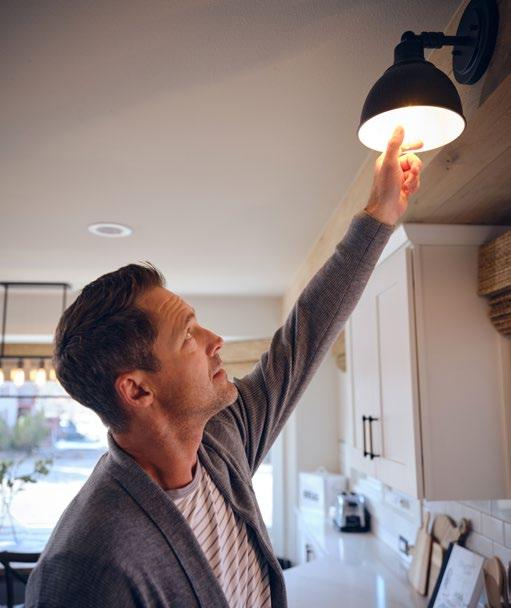
WATTS VS. LUMENS
When you’re shopping for light bulbs, it’s easy to focus on watts, but wattage only defines how much energy a bulb uses. When it comes to brightness, focus on the lumen count. Lumens describe the actual light output. A helpful rule of thumb: higher lumens mean brighter light and lower watts mean less energy consumed. Always check wattage ratings for fixtures and only install bulbs that meet the fixture’s wattage safety requirements.
COLOR TEMPERATURE AND CONSISTENCY
Light bulbs also vary in color temperature, which ranges from warm yellow to cool white or even bluish tones. This detail often gets overlooked — until you replace one bulb and notice the new light doesn’t quite match the others. If mismatched tones drive you crazy, consider replacing bulbs in a room at the same time with the same brand, color, and lumens. That way, the look stays consistent, and you won’t be stuck hunting for a perfect match later.
DIMMERS AND SWITCHES
Installing dimmers instead of standard on/off switches can be a game changer. Dimmers give you more
control over brightness, help save energy, and create a more comfortable atmosphere. Not all bulbs are dimmable, so double check labels before buying.
FIXTURES: FORM MEETS FUNCTION
Bulbs are only part of the equation — fixtures matter too. Each type serves a purpose. Ambient lighting from sconces or glass-covered ceiling fixtures provides general illumination. Task lighting — pendants, desk lamps, or track lighting — focuses light where you need it most. When choosing a fixture, think beyond looks and consider if a fixture and bulb combination provide the right amount of light for the space. A beautiful chandelier might look perfect over the dining table but leave the rest of the room too dim. Alternatively, an oversized fixture could flood the room with more light than you need, wasting both energ y and money.
Good lighting doesn’t just make your home look better — it makes it feel better too. With a little planning, you can create spaces that are welcoming, functional, and energ y efficient.

Photos

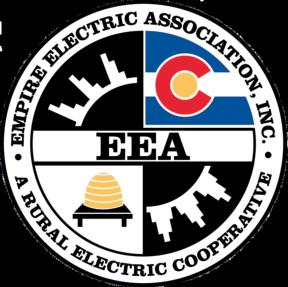

EOC makes a difference in Colorado communities by providing energy assistance and clean energy programs. In 2024, EOC helped more than 43,000 households.
EEA members can sign up at eea.coop for monthly donations to EOC, which will be matched by EEA. Onetime donations are also accepted.


REMEMBER AND HONOR VETERANS DAY

2026 Purchased Power Increase Forecast

Empire Electric Association was notified by Tri-State Generation and Transmission Association that the wholesale power supplier’s rate will increase an average of 7.5% on January 1, 2026. Tri-State’s rate increase is being driven by increased maintenance costs on aging thermal generators, ownership costs related to new solar generators coming online in 2025, less dependence on deferred revenue compared to prior years, and higher costs for purchased power including a substantial increase from Basin Electric, a key wholesale power supplier.
Power that EEA purchases from Tri-State represents between 50%-60% of EEA member bills. Depending on your rate class and usage, expect your February 2026 bill to increase 3.75%-4.5%. EEA does not currently anticipate increasing its base rates. If a base rate increase is necessary, that would be in addition to the forecast purchased power increase.
The rate component that will reflect the purchased power increase is the power cost adjustment. The PCA is also impacted by revenue and expenses from 2025 and will not be finalized until January 2026.
EEA will provide notice of any base rate increase through bill messages and on eea.coop. We will post the final PCA rates when they are available in late January. We appreciate your support and understanding as we work to keep your power delivery reliable in an environment where we all face increasing costs.
Space Heater Safety
Planning on using an electric space heater to provide supplemental heat at home or in the barn? Make sure your unit is in safe working order before you plug it in. Check the plug and cord for signs of overheating or cracked insulation. Make sure safety guards are in place and test the automatic shut off switch if the unit is tipped over. If you find any problems or have an older unit that does not have up-to-date safety features, it is time to buy a new unit.
Multiple types are available, but the most important thing to remember is to buy one that you can operate safely and has a certification from a product safety organization such as Underwriters Laboratories (UL).
TYPES OF SPACE HEATERS
Metal coil and fan: Uses electricity to heat a metal coil that is safely tucked inside. The fan pulls cold air from the room through the heater and returns warm air to the room.
MONTHLY CALENDAR & CO-OP PHOTO CONTEST WINNER
November 11 – Veterans Day.

Ceramic radiant: Like the metal coil variety, these space heaters also include ceramic plates inside. They absorb and store heat so that it radiates outward, even after you turn the heater off, making these heaters more efficient.
Infrared: These heaters use electromagnetic radiation in the infrared spectrum to heat objects in the room like furniture, walls, and even you. Instead of heating
November 14 – EEA board meeting begins at 8:30 a.m. at its headquarters in Cortez. The agenda is posted 10 days in advance of the meeting at eea.coop. Members may attend in person or remotely. Instructions to attend remotely are included on the agenda.
November 27 – Thanksgiving Day. EEA’s office will be closed November 27 and 28 for the holiday.

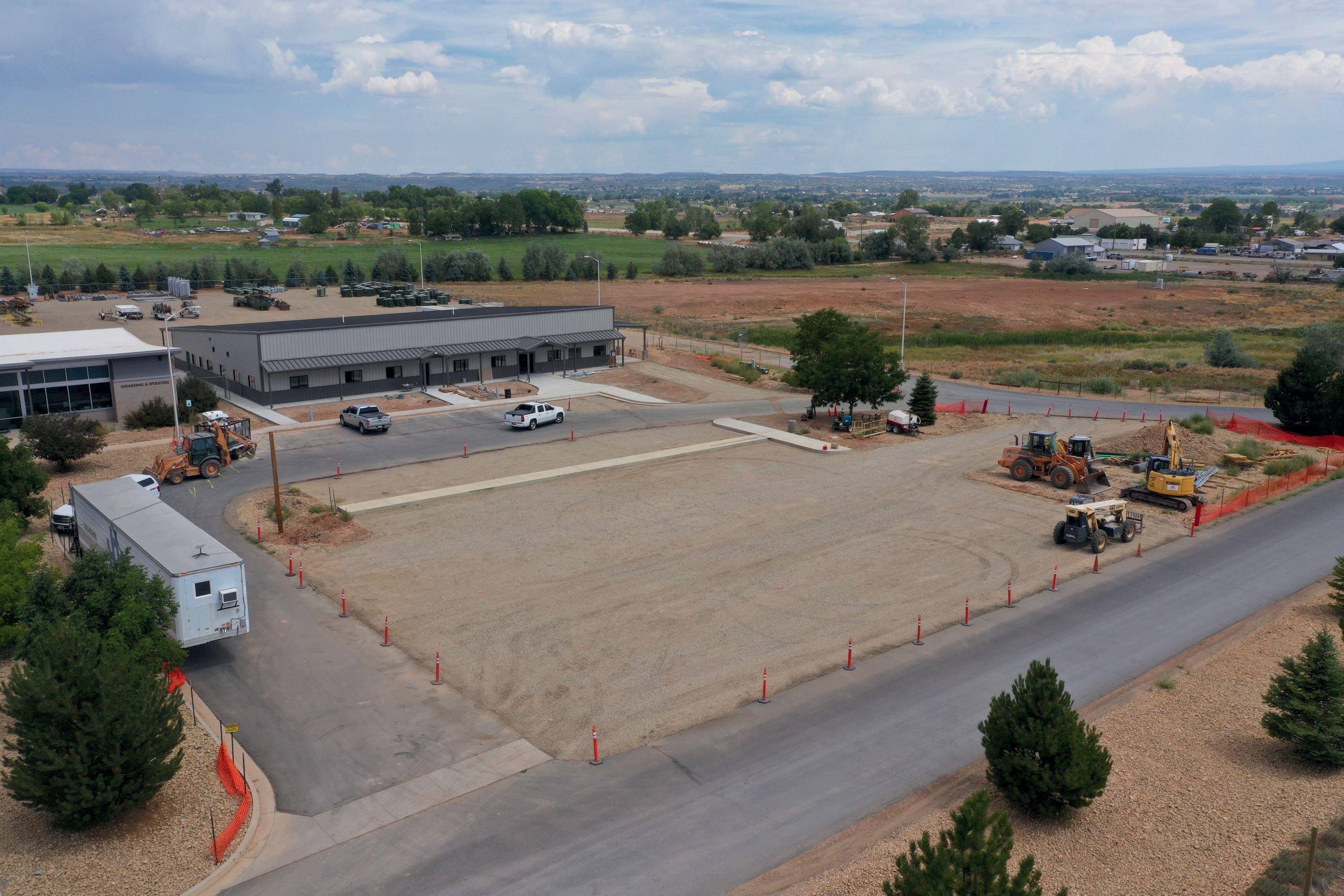

Photo
Grace. Photo by Amber Fisher
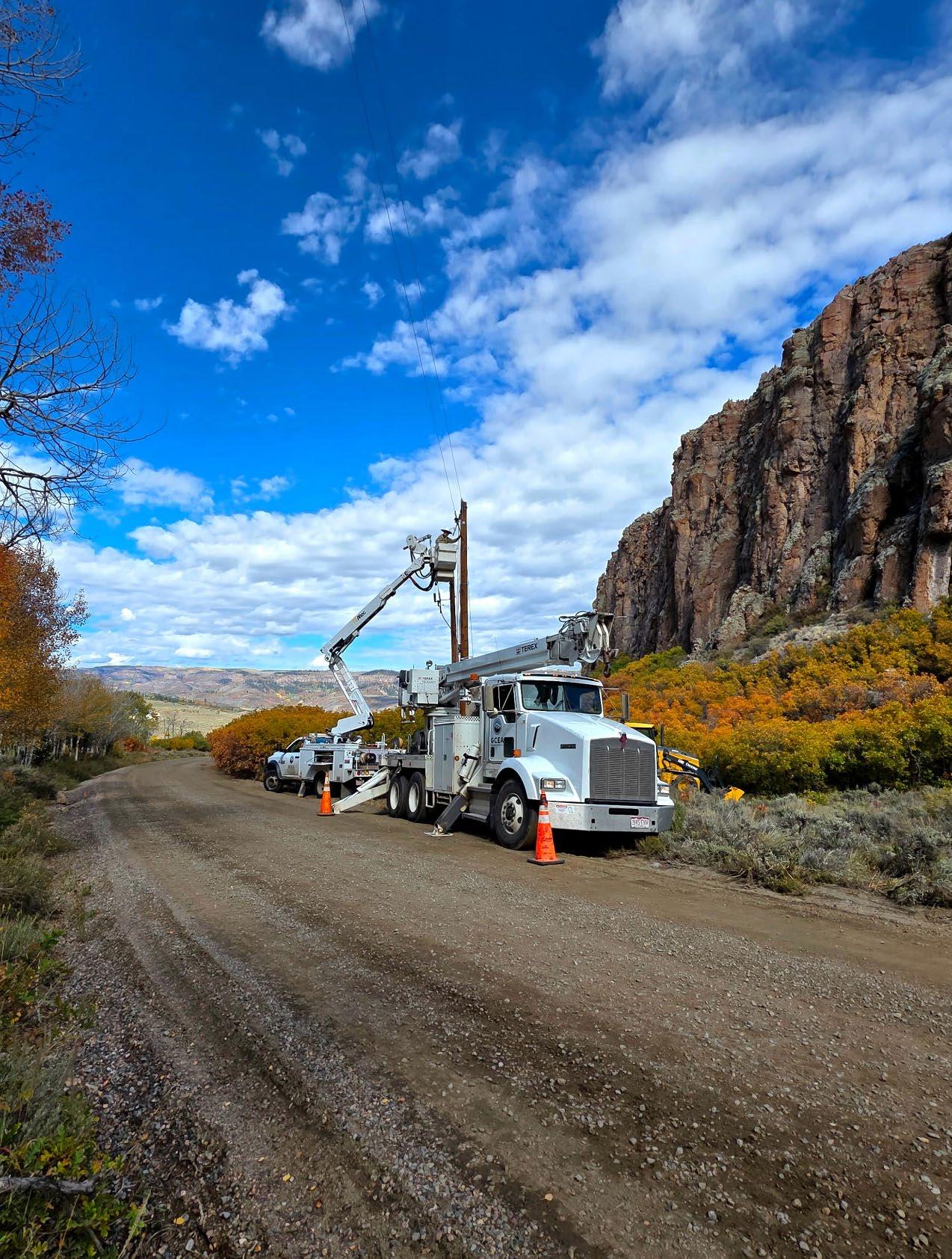
Concern for Community
By Mike McBride Chief Executive Officer
As the year draws to a close, we are reminded to give thanks and share our blessings with friends, family, and community. As a not-for-profit rural electric cooperative, GCEA is uniquely positioned to give back to our members in many ways.
Guided by the cooperative principle of Concern for Community, GCEA invests in local initiatives through donations and sponsorships, scholarships for students, environmental stewardship, and programs that help members save money.

Each year, GCEA’s board of directors authorizes funding from unclaimed capital credits for our Care for Education and Care for Community funds. These funds make it possible to support dozens of local nonprofit organizations, including food pantries, fire protection districts, search and rescue, emergency medical services, and community projects like rebuilding playgrounds. We are also proud sponsors of events such as Cattlemen’s Days, the Lake City Alpine 50 Bike Race, the San Juan Solstice 50-Mile Run, the Adaptive Sports Center’s Bridges of the Butte, Living Journeys’ Hike, the Crested Butte Arts Festival, and the 4-H Junior Livestock Sale BBQ.
Through Care for Education, GCEA has awarded hundreds of scholarships to students pursuing higher education at colleges, universities, and trade schools. We also provide opportunities for young people to participate in educational trips — such as the Electric Cooperative Youth Tour and Cooperative Youth Leadership Camp near Steamboat Springs. Many students
have returned from these experiences inspired to pursue careers in engineering, environmental science, political science, and communications.
Education is also key to empowering our members every day. Among other things, GCEA member support specialists answer questions about high energy use, help with billing concerns, and teach members about SmartHub, an online tool for tracking energy use. They also connect members with rebate opportunities, and bill assistance programs like the Low-Income Energy Assistance Program (LEAP) and Energy Outreach Colorado.
When it comes to reliability, GCEA is committed to keeping the power on. We continue to invest in major projects to replace aging infrastructure and upgrade power lines, ensuring dependable service for years to come.
We are equally proud to support local renewable energy. Projects like hydropower at Taylor Dam and solar generation near Crested Butte and Gunnison are expanding local clean energy while keeping rates stable. Thanks to grants, power purchase partners, and support from PowerWise Pledge™ participants, these projects were built without increasing member rates.
At GCEA, we are proud to give back to the community that gives us so much. Thank you for your trust in us as your energy provider. We look forward to continuing to serve, support, and power all your possibilities.
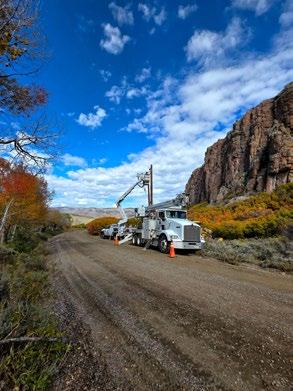
ON THE COVER
Photo by Justin Hulick
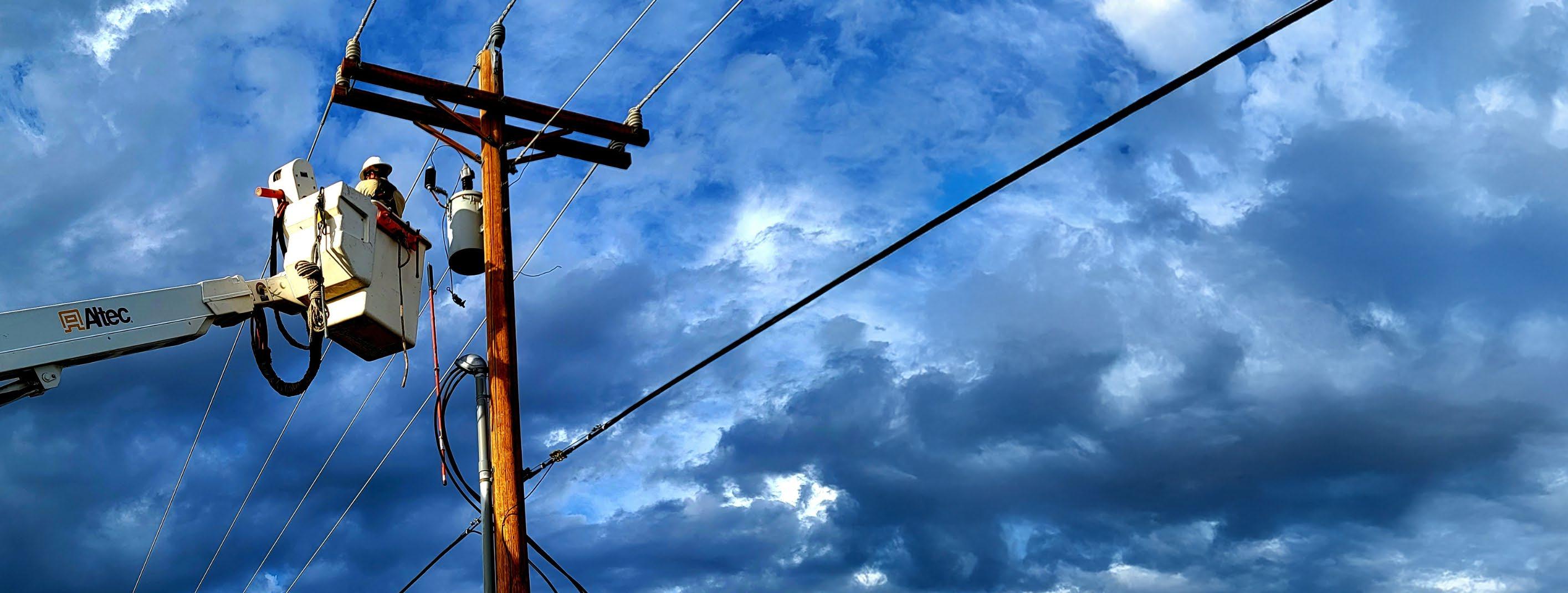
When the Lights Go Out
Behind the scenes of a power outage
By Alliy Sahagun Member Relations Supervisor
It’s Monday night, and the gang is gathered to watch an exciting game of football. Food is being prepared and drinks are chilling as you settle in to watch your favorite team play its rival, until… the power goes out. Not just a blink, but a complete outage. What is happening?
While you scramble for flashlights and candles, rest assured our crews are already working safely and efficiently to restore power.
Power outages happen for a variety of reasons. Some are planned to repair equipment or replace poles and wires, while others are unplanned and beyond our control. Common causes include:
Trees and vegetation: Wind can knock branches or fallen trees into power lines, causing outages. Regular tree trimming keeps lines clear and prevents outages.
Animals: Birds, snakes, and other critters can occasionally come in contact with equipment and cause outages. We provide safe structures to encourage birds to nest away from lines.
Storms: Lightning strikes, snow or ice buildup can damage lines or cause them to sag.
Equipment failure: Despite regular inspections and maintenance, equipment can malfunction, and we respond promptly when it does.
Public damage: Accidents, vandalism, or unsafe digging can interrupt power. Even vehicles colliding with utility poles or equipment can cause outages.
System Settings: When we anticipate dry, windy conditions, we may operate in “non-reclose” mode. Normally, our power lines are protected by devices called circuit breakers or interrupters. These can automatically turn the power back on if something briefly causes an outage, such as a tree branch brushing against a line in the wind. This helps restore power quickly when the problem is temporary.
In non-reclose mode, the breakers will shut off power once and stay off. They will not automatically try to restore power. Instead, our crews will go to the site, inspect the lines, and manually restore
power once it’s safe. This extra precaution greatly reduces the chance of sparks that could start a wildfire. However, it also means outages may last longer and affect more members than usual.
Once we receive an outage report, several steps ensure safe and efficient restoration:
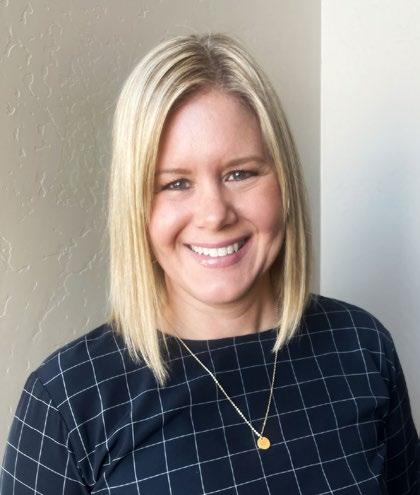
1. Crew assignment: Teams are dispatched to the affected area. With a large service territory, travel time can vary depending on where crews are already working.
2. Investigation: On site, crews locate the problem, assess safety risks, and plan repairs. Downed lines must be safely de-energized before work begins.
3. Load switching: Some outages require rerouting electricity between feeders or substations. For example, during a severe Lake City outage in February 2023, a mobile substation was used to maintain service while repairs were made.
4. Equipment repair: Crews often have the tools and parts to fix problems immediately. In some cases, new equipment must be brought in, as during the Mt. Crested Butte outage in January 2025, when a new breaker from Gunnison was needed.
Our goal is 100% reliability — we want your lights on all the time. While Mother Nature and other challenges sometimes get in the way, recent reliability data shows that GCEA delivers power 99.97% of the time. That means, on average, members experience only a handful of hours without power each year. It’s a metric we’re proud of and one that reflects our crews’ dedication to restoring service quickly and safely whenever an outage occurs. We appreciate your patience as we work to get your home — and your Monday night football game — back on track. For outage updates and information, follow Gunnison County Electric Association on Facebook.
Why Avoiding the Peak Matters
By Logann Long Communications and Outreach Coordinator

Most of us have an evening routine. We get home from our daily activities around 5 p.m., flip on the lights, start cooking dinner, and maybe run a load of laundry or the dishwasher. It feels natural, but that busy evening window is also when electricity demand surges in almost every household. When many households use multiple large appliances at the same time, the electric grid feels the strain.
HOW DOES IT AFFECT THE GRID?
Think of the electric grid like a highway. Most of the time, lanes are lightly utilized and traffic flows smoothly. But when everyone tries to drive home at the same time, traffic jams happen and more lanes are needed to accommodate the extra cars on the road. The same is true for electricity use.
During peak hours when many households are cooking, cleaning, and showering all at once, electricity demand surges. To meet that sudden spike, power supplier Tri-State Generation and Transmission and GCEA must have sufficient generation, transmission, and distribution resources. Building and maintaining our system to meet peak demand comes at a cost.
WHAT IS DEMAND?
Demand is the highest amount of electricity your household uses at one time, measured in kilowatts. For example, if you turn on the oven, clothes dryer, and dishwasher all at once, your household demand spikes. Even if that only happens once, it sets your monthly demand reading.
LOWER DEMAND TO LOWER YOUR BILL
For years, GCEA has been educating that the only way to lower your monthly bill is to use less electricity. With GCEA’s 2026 rate restructure, you will now have another way to lower your bill by moving your electric use to a different time of day. Just like choosing to take a trip on the highway at a different time of day to avoid rush hour traffic, you can shift your energy usage away from the peak hours to avoid higher demand charges. Same power, different hour!
GET TO KNOW YOUR BILL
One of the best ways to take control of your energy costs is to understand what is on your bill. Look for two key readings:
• Peak Demand (kW): This shows the highest amount of electricity your home used at one time during peak hours. This reading sets your demand charge. Peak hours are 5 p.m. to 9 p.m., Monday through Saturday.
• Energy Use (kWh): This shows the total amount of electricity your household used during the month. This reading sets your energy charge. Keep an eye on both readings and you will start to see how everyday habits can impact your bill.
SHIFT, STAGGER, & SAVE
These examples show the potential peak demand charges under GCEA’s new three-part rate. Shifting appliance use to off-peak times can help avoid these peak demand charges.
The “baseload” is the steady amount of electricity your home uses at all times (like your refrigerator, Wi-Fi router, or devices on standby).
Everyday Examples
Here is how common activities translate into demand charges under the new rate:
• Baseload (refrigerator, Wi-Fi, standby devices): 0.25–0.5 kW = $0.25–$0.50
• Oven only: 5 kW = $5
• Oven + vacuuming: 6.4 kW = $6.40
• Dishwasher only: 1.7 kW = $1.70
• Dishwasher + clothes washer: 3.1 kW = $3.10
• Clothes washer only: 1.4 kW = $1.40
• Clothes washer + dryer: 8 kW = $8
• Clothes dryer only: 6.6 kW = $6.60
• Electric water heater: 4.5 kW = $4.50
Even the smallest combinations add up quickly. Notice how pairing appliances can more than double the demand charge compared to running them separately. Electricity is always there when you need it, but when we all need a lot of it at the same time, costs go up. With GCEA’s new rate design, managing your peak demand is one of the best ways to save money. We are here to help. Call GCEA with any questions at 970-641-3520.
FIND THE FIND THE PERFECT PERFECT
REBATES REBATES
FFOR OR YOUR HOME YOUR HOME

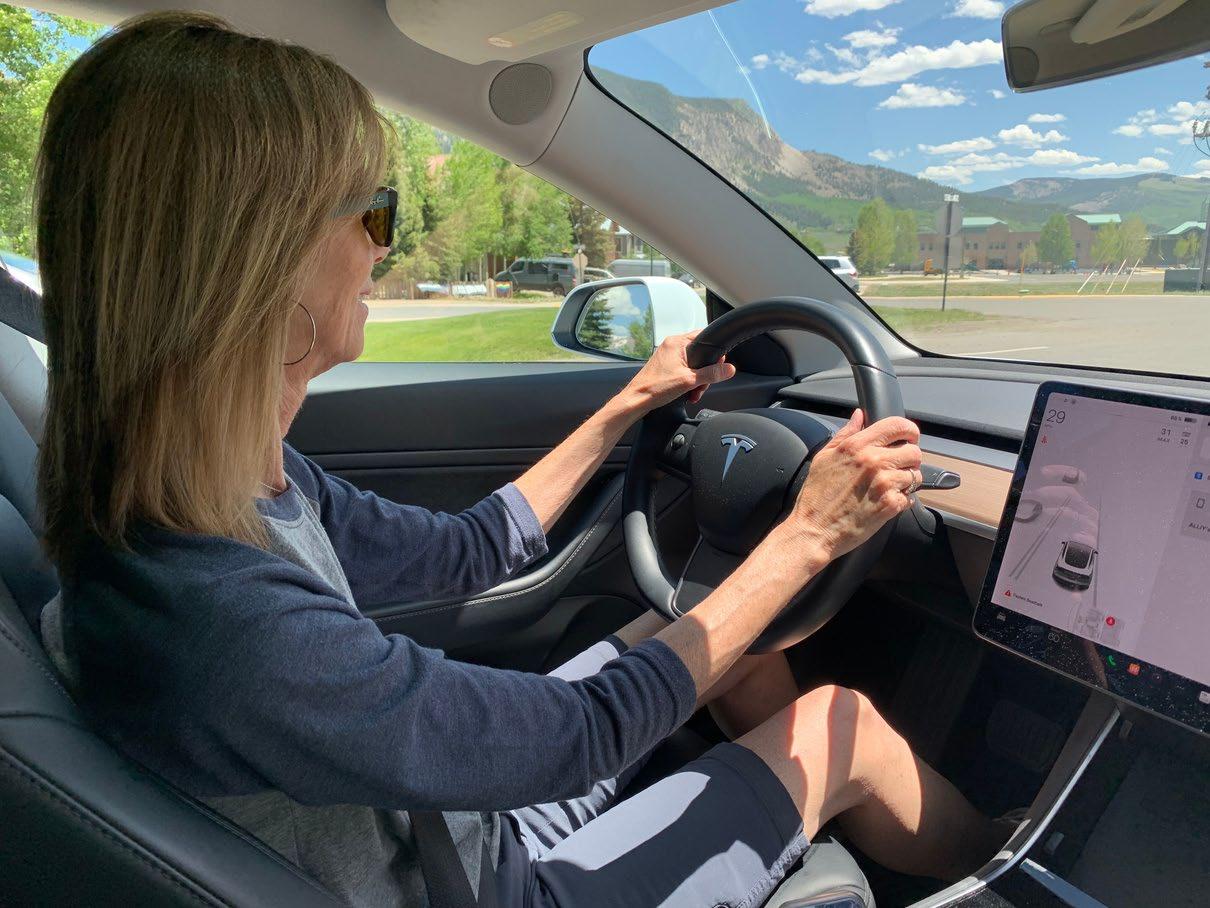
ENVIRONMENTALLY FRIENDLY & COST SAVINGS



Upgrade and Save
Fall is officially here, bringing cooler temperatures and shorter days. As the seasons change, it is the perfect time for homeowners to start preparing their homes for the cold months ahead. Simple upgrades, like improving insulation, can make a big difference, keeping your home warm and comfortable while also helping reduce energy costs. Acting now ensures you stay cozy throughout the season and avoid higher heating bills later.
GCEA offers programs designed to make insulation and other efficiency upgrades more affordable. Homeowners can take advantage of rebates and the On-Bill Repayment program, which allows you to spread the cost of improvements over time.
The OBR program is simple and convenient:
• No money down
• Low-interest financing
• Payments added directly to your GCEA bill
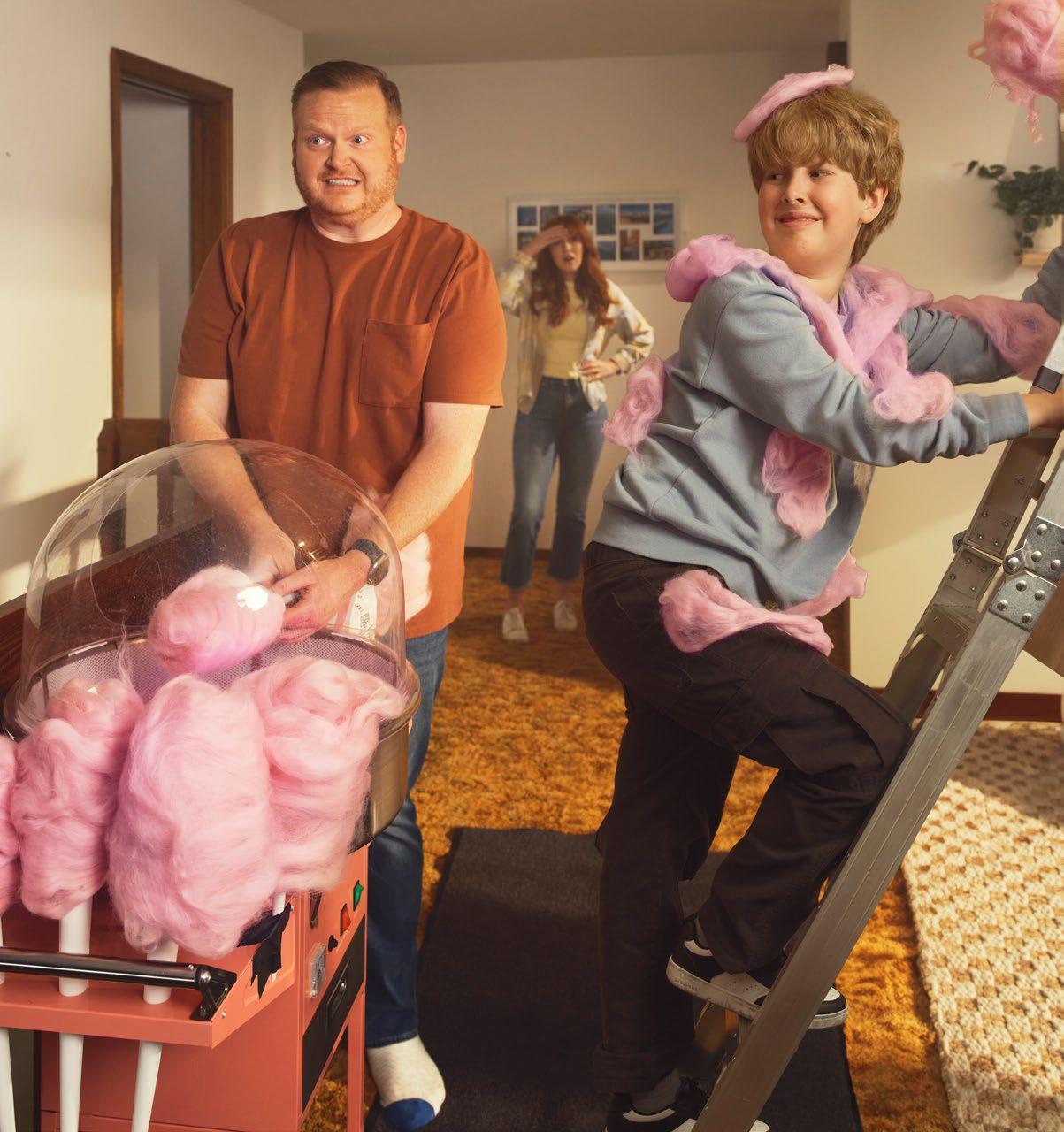

By investing in energy-efficiency upgrades, you can improve your home’s comfort in every season while reducing your energy usage. With the OBR program, these improvements can be made today without the stress of upfront costs.
To learn more about available rebates and how the On-Bill Repayment program works, visit gcea.coop.
Powering Students’ Futures


GCEA proudly sponsors local students for two unforgettable opportunities:
Electric Cooperative Youth Tour
June 15–21, 2026
Explore the nation’s capital, meet Colorado leaders, and connect with students from across the country.
Cooperative Youth Leadership Camp
July 11–16, 2026 – Steamboat Springs
Build leadership skills, learn about cooperatives, and have FUN!
Who Can Apply:
High school juniors and seniors
• Age 16+ at the time of trip
• Must be a GCEA member
• Applications are due Friday, November 21
Photo by Willie Petersen
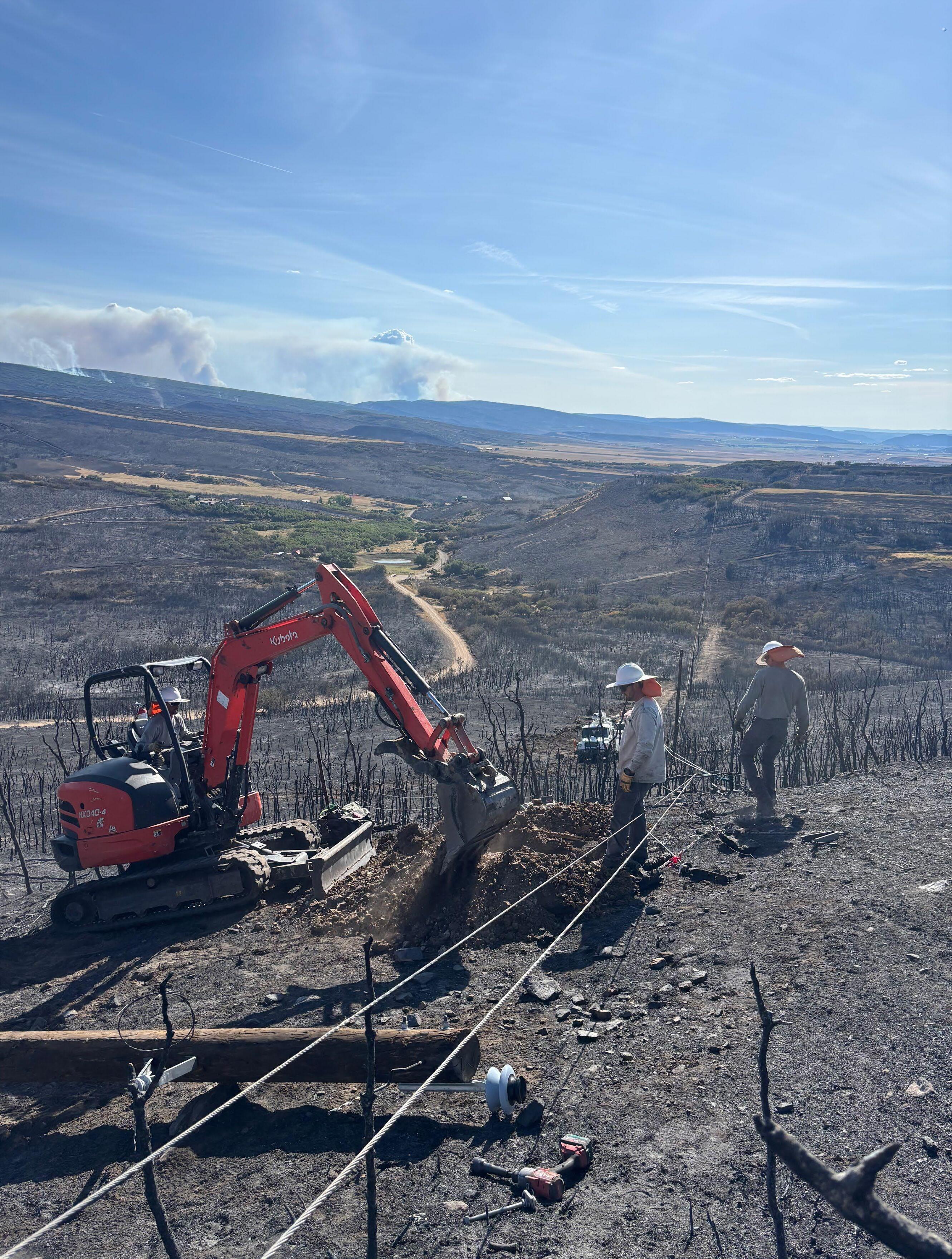
GVP helps White River Electric Association with the restoration of power lines after the Lee wildfire burned 138,000 acres near Meeker.

Photo by Curt Graham
What’s Good … and What’s Popular
By Tom Walch Chief Executive Officer
Ihave been a fan of the “Calvin and Hobbes” comic strip for decades. It is an indulgence that I shared with my son, and now my grandson. It is amazing how such a whimsical form of entertainment can drive home real-life lessons that have helped me succeed in business and in life.
As I work my way through some of the questions and comments from consumers about Grand Valley Power’s recent rate restructuring, it reminds me of a panel where Calvin (who is probably about the same age as my nine-yearold grandson), informs his father that his approval rating in Calvin’s “Dad Poll” is pretty low. His father, unfazed, responds, “That’s because there’s not necessarily any connection between what’s good and what’s popular. I do what’s right, not what gets approval.”
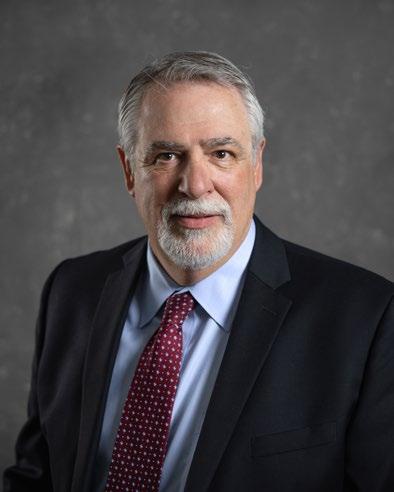
to GVP team members’ efforts to hold costs in check, we have been able to limit the increase for the average GVP consumer to about 4%.
For the individuals serving on the Grand Valley Power Board of Directors, nowhere is the disconnect between what’s good and what’s popular greater than when the board is fulfilling its rate-making responsibilities. Rate increases — even moderate ones — are never popular. Add to that a move from a rate structure that is familiar to one that introduces new and unfamiliar elements, and it grows in unpopularity. The Grand Valley Power board, following a triedand-true process, demonstrated the backbone to do what is both right and unpopular with its recent rate restructuring.
The need for a rate increase is straightforward. We have all seen the costs of consumer goods continue to rise. Grand Valley Power is a consumer too. As previously detailed in the pages of this magazine, the costs we pay for everything from postage to power poles continue to climb. Utilities across the country are seeking rate increases in the 6%-7% range. Thanks
BOARD MEETING NOTICE
That doesn’t mean that everybody will see a 4% increase. We have raised our Grid Connectivity Charge slightly and implemented a demand charge. These changes align our cost recovery more closely with the costs we incur. For decades, a big part of our fixed costs and our distribution demand costs have been recovered with our kilowatt-hour charge. In recent years we have seen significant growth in the number of GVP consumers who have installed solar panels to generate some of their own electricity. These consumers are not buying as many kilowatt-hours. Under our old rate structure, they were not paying for all the fixed costs and distribution demand costs that Grand Valley Power incurred in providing them with electric service. The new rates require these consumers to pay more of these costs. They would be likely to see rate increases greater than 4%. I expect that our approval rating among these consumers will be lower. But whether consumers approve it or not, I believe that our board did what is right.
There is something in the most recent board action on rates that every member of Grand Valley Power should like. Doing what was right was hard. Introducing a demand rate was hard. It would have been much easier to stick to our existing rate structure. But the GVP board did not take the easy path. Their actions weren’t dictated by polls. They weren’t simply looking for approval. They held true to one of our foundational values: striving to do the right thing. Grand Valley Power will be better because of this.
Grand Valley Power board meetings are open to members, consumers, and the public. Due to schedule conflicts, the November meeting of the Board of Directors will be held Wednesday, November 12 at the Grand Valley Power office, located at 845 22 Road, Grand Junction, Colorado. The monthly agenda is posted in the lobby of the office 10 days before each meeting and posted on the GVP website.
If anyone desires to address the Board of Directors, please let us know in advance and you will be placed on the agenda.
Knowledge Is Power Three things to know about demand
By Rita-Lyn Sanders Director of Member Services and Communication
Beginning with bills sent in early December, Grand Valley Power consumers in the General Service—Time-of-Use (GS-TOU) rate class will see a demand charge. The rate class is renamed General Service–Time-of-Use/Demand (GS-TOU/D). Although the demand charge is new to our residential consumers, the businesses that comprise our commercial and industrial rate classes have paid a demand charge for many years. Demand is an effective way to recover the cost of providing big amounts of power at one time by charging the consumers who use that power. Knowing what demand is and how it is billed can help you take steps to control your household demand. Here are the top three things you need to know about demand:
1. WHAT IS A DEMAND CHARGE?

Log into your SmartHub account to explore monthly demand data.
use at one time. See a graphic showing the average demand of some high and low demand appliances on our website at gvp.org/demand.
The demand charge is $1 per kilowatt (kW). This fee reflects the consumer’s highest amount of electricity usage at one time during the billing period. The charge is designed to help pay for the costs of building and maintaining GVP’s distribution system. That way, GVP can reliably provide all the power members need when their need for power is greatest.
2. HOW CAN MY HOUSEHOLD CONTROL IT?
Every electronic device in your home draws electricity from the Grand Valley Power distribution system. High demand appliances like electric clothes dryers and electric water heaters require more electricity to run than other appliances. The best way to control your demand is to familiarize yourself with a device’s demand and limit the number of electric devices you
3. WHERE CAN I REVIEW MY DEMAND HISTORY?
You can see your monthly demand, measured in kilowatts on your bill. The average household demand of Grand Valley Power’s residential consumers is 7.7 kW. Log into SmartHub and click Usage > Usage Explorer to see your previous months’ demand. Set the Usage Type field to Demand (kW) for a line graph that you can hover over to reveal the total kilowatts for the selected interval (monthly or daily).
If you do not have SmartHub, consider registering for an account at gvp.org/SmartHub. Knowledge is power, and the Usage Explorer tool will help you take control of your energy costs.

H O L I D A Y






Don’t let your feast go up in flames
Avoid plugging too many appliances into one outlet while cooking your feast!
Keep cords clear in the kitchen
Keep cords tucked away from foot traffic and cooking areas this Thanksgiving
Don’t overload the tree
Safely make your tree merry and bright! Don’t overload outlets with lights and decor
Check
Inspect


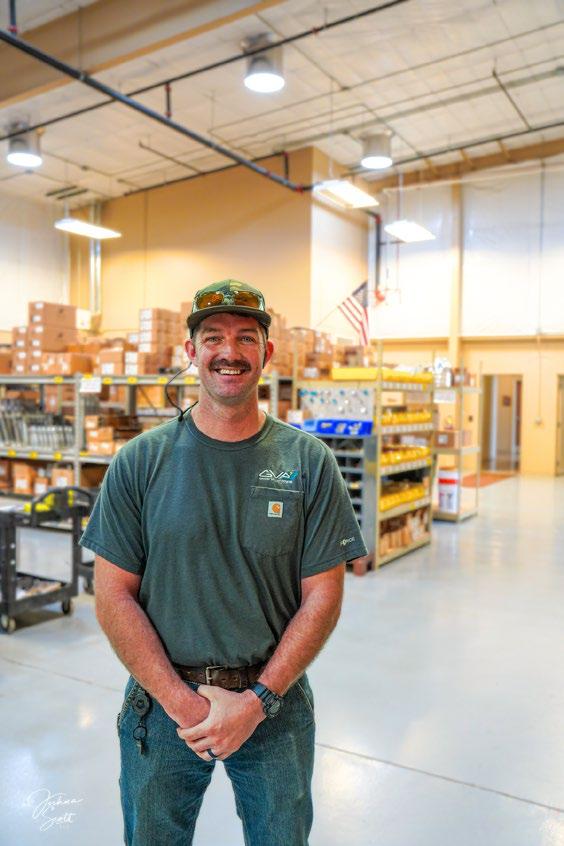


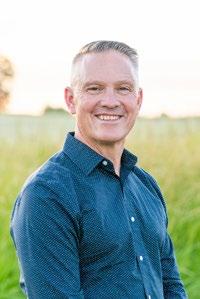














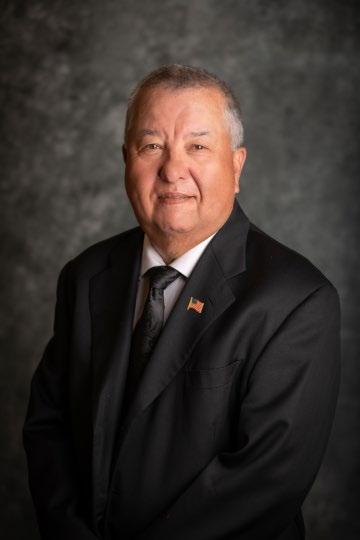






Derek & Heidi Elder The Woods Family
Geary & Carolyn Hall


The Season of Giving
By Dennis Herman General Manager
As the holiday season approaches and the air turns crisp, we are reminded that this truly is the season of giving. It is a time for gratitude, generosity, and looking out for one another—and at Highline Electric Association, that is something we take to heart year-round.
You have probably heard us talk about our concern for community. It is not just a nice phrase, it is one of the core principles that makes electric cooperatives like HEA different from other utilities. We are not just here to keep the lights on, though we are always working hard to do that. We are here to make life better for the people we serve — our members, our neighbors, and our friends.
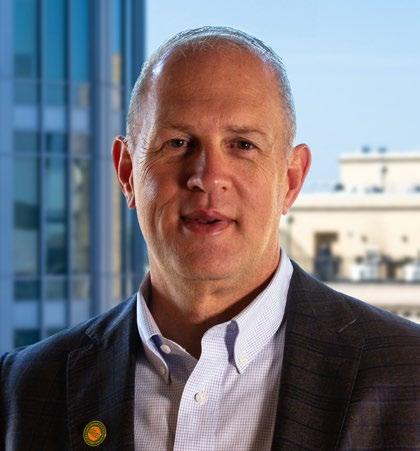
about their futures. That is giving in the most meaningful way: investing in tomorrow’s leaders.
Since we care deeply about safety, we also spend time visiting schools throughout the communities we serve, holding demonstrations and teaching folks of all ages how to stay safe around electricity. We believe knowledge is a gift and we love sharing it.
Over the years, we have faced challenges together, and every time, our co-op family has stepped up. We band together to support those in need, to keep our community strong, and to build something better for the future. That spirit of generosity is never more evident than during the holiday season.
Take our HEA Cares program, for example. This program allows employees to contribute to a fund through a payroll deduction. The fund is administered by an employee committee and it helps families who are struggling to make ends meet, usually after being confronted with an unexpected medical emergency. Every little bit adds up — and it makes a big difference.
We are also proud to support local students through the Youth Tour program, where we send some of our community’s brightest young people to Washington, D.C., to see democracy in action and dream big

You will also find our team out in the community beyond work — coaching youth sports, volunteering at local events, serving on nonprofit boards, and partnering with our chambers of commerce — to keep our local economy strong. Because when you are part of a co-op, giving back is not a requirement — it’s just what you do.
While the holiday season is a festive time, we understand these can be tough times for many. If you need advice on saving energy to reduce your energy bills, want to explore payment plan options, or you simply have questions, please do not hesitate to reach out. Our energy efficiency rebate program can help to make efficient electrical appliances more affordable. We are here to help, not just during the holiday season, but all year long.
At Highline, we believe concern for community is more than a value — it is the heart of who we are. And during this season of giving, we are especially grateful to be part of such a caring, generous community.
From all of us at Highline, we wish you and your loved ones a joyful, safe, and bright holiday season.
1300 S. Interocean P.O. Box 57 Holyoke, CO 80734-0057
phone 970-854-2236 toll free 800-816-2236
info@hea.coop
Holyoke & Sterling: M-Th 7 a.m.– 5:30 p.m.
Ovid: Mon., Tues., Thurs. 9 a.m.–3 p.m.
hea.coop facebook.com/HighlineElectric
Tammy Kroeger Retires
After 13 years of dedicated service, Tammy Kroeger retired on September 30 from her role as Member Services Office Representative at Highline Electric’s Holyoke office. Tammy has been a familiar and friendly face to countless members over the years — always ready to help with a warm smile and a kind welcome. She never met a stranger, and her cheerful personality made her a joy to work with and to those who called or visited the office.
Many of our members have likely spoken with Tammy at some point, whether over the phone or in person. Her presence in the office will be missed, but we are grateful for the years she spent serving our community with such heart.
Tammy is excited to spend more time with family and friends. “Each day will be a new adventure,” she said. “I look forward to seeing what God has in store for me.”
We wish Tammy all the best in her retirement.
ATTENTION STUDENTS
APPLY NOW FOR A SUMMER 2026 TRIP
Each year, Highline Electric Association sponsors two all-expenses-paid trips for four area students. Two students will fly to Washington, D.C., to attend Youth Tour, and two students will travel to Steamboat Springs, Colorado, to attend Cooperative Youth Leadership Camp. To be a lucky winner of one of these two awesome experiences, please complete the application on our website. The top two applicants will choose one trip of their preference. To apply, scan the QR code or visit hea.coop/youth. Applications must be received by December 15.

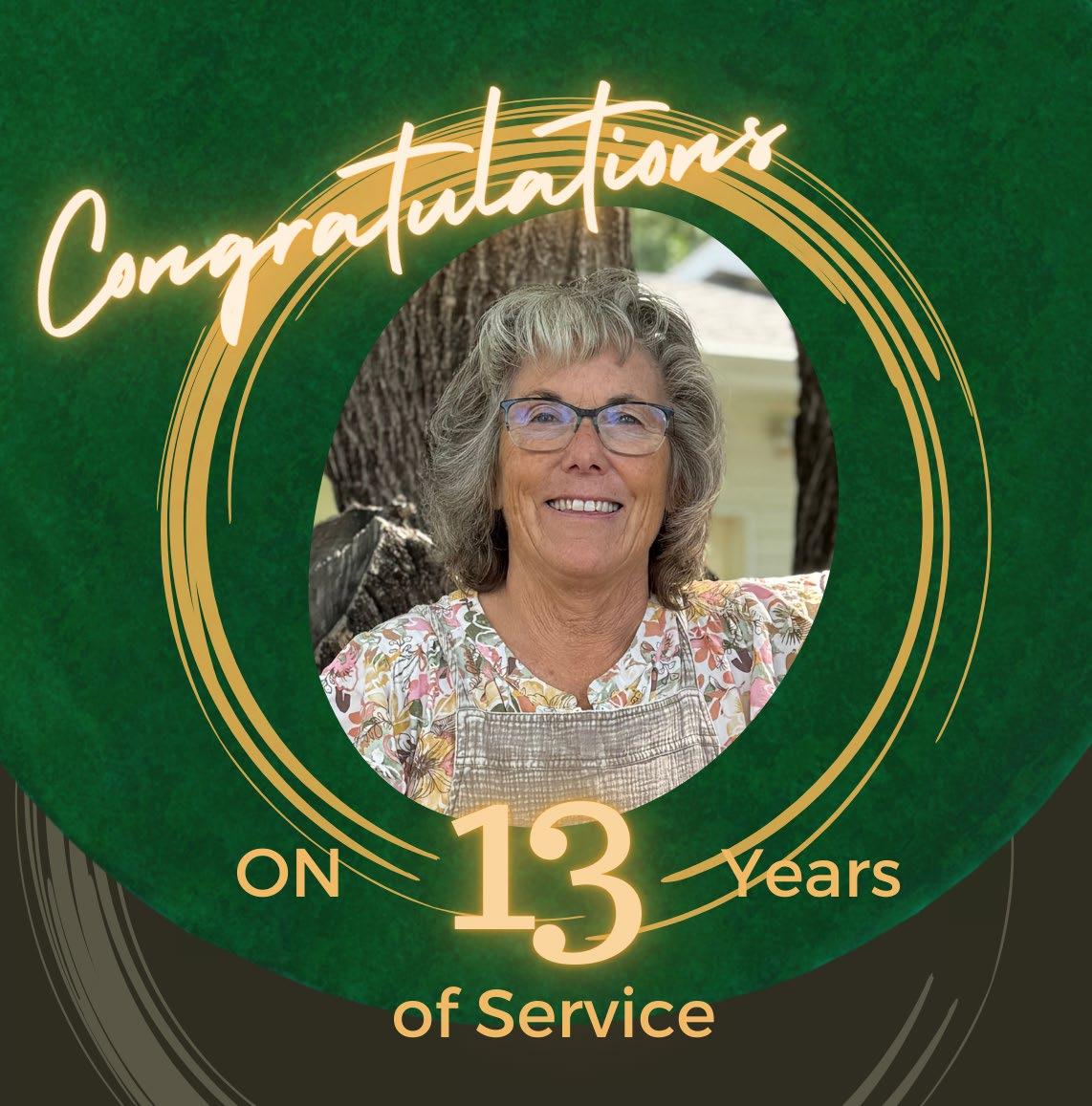

Highline Electric offices will be closed November 27 and 28.
Happy Thanksgiving

PAYMENT REMINDER
When you pay your Highline bill, please remember to include the payment stub with your check. Doing so helps ensure accurate and timely processing of your payment.
REBATE DEADLINE SOON!
To ensure your rebate is processed and paid in 2025, please send all rebate paperwork to Highline Electric by December 8. Any rebate submissions received after this date will be processed in the new year.


WE WANT YOUR FEEDBACK!
COMPLETE THE SURVEY TODAY
Highline Electric Association is conducting a member satisfaction survey during the month of November. Your feedback helps us improve our services to you and helps us plan for HEA’s future. The survey will be sent to you as a statement insert and is available on our website at hea.coop. Scan this QR code to take the survey.
Thank you for participating!

Congratulations
Congratulations to the following employees who observe a Highline Electric employment anniversary in November:
Chris McKay - 19 years
Eric Luedke - 12 years
2026 LOAD CONTROL
Letters for the 2026 Load Control program will be sent to all irrigation landowners in November. All irrigation wells that were in the 2025 Load Control program will be automatically enrolled in the 2026 program on the same option unless Highline Electric is notified by January 31, 2026. Included in the letter will be a fact sheet detailing each load control option. If you have changes for the 2026 program — including tenant changes — please call our office at 970854-2236 and contracts will be sent to you.
The deadline to return executed contracts for the 2026 Load Control Program is January 31. No option changes, additions, or deletions will be allowed after January 31.
Watch for your letter and notify us of any changes you want for the 2026 program.
ACCOUNT INFORMATION
Did you know the description field on your account plays a key role in ensuring the accuracy of your payments? It also helps us help you during outages. This field helps us quickly identify the correct account. It shows up on your statement as your personal identifier.
If your account does not currently have a description or if it needs to be updated, please contact Highline Electric Association. Ensuring this information is accurate helps us serve you more efficiently.
Is Your Name Below?
Below continues the list of names of Highline Electric Association members who have unclaimed capital credits from the electric cooperative. HEA publishes the list every year to notify members that the co-op has issued them a capital credit check and that the check has not been cashed. Look for your name in the printed list below. If you are a current or former HEA member and find your name, email capitalcredits@hea.coop or call 970-854-2236. Names will continue in next month’s Colorado Country Life magazine.
PARKER, SHERMAN STANLEY
PARR, WALTER C
PARSONS, JIM
PARTNERSHIP 18701
PARTNERSHIP, PEDRONI HEIRS
PARTNERSHIP, R & P LIMITED
PARTNERSHIP, SJK-ZIA
PATTEN, BILL
PATTERSON, DEAN
PAWNEE PASS RANCH
PAYNE, ALENE L
PAYNE, LES
PEAKE, JERRY H
PEARSON, ALBERT L PECINA, JOHN LEE
PECK, BARBARA
Continued on page 10.
PENA, CESAREO
PENA, GUADALUPE
PENZING, KEN
PEPPLE, ROY
PEREA, NAU
PEREZ, CARLOS
PESEK, RICK J
PEVLER, MARILOU
PHELPS, ROBERT S
PHILLIPS, RYAN
PHILLIPS, STACY
PICKENS, ANDREW
PICKENS, JOHN
PIERCE, JESSE B PIERCE, MARGARET
PITTMAN, DELBERT
PITTMAN, JAMIE
PITTMAN, PAUL E PIVONKA, LORRAINE L PIZZA, JULESBURG
PLACE, LUCY’S PLANK, TRICIA
PLATT, BECKY
PLATTE RIVER CELLULAR OF CO
POE, ELWIN POET, FAITH
POLLART, CHARLES A POLLOCK, RONALD J POPOVICH, DANIEL A PORK, SPRING CREEK
PORTER, DEACON
PORTER, LEO
POTTER, DIANE K
POTTER, ROYCE
POWELL, DANEE
POWELL, DIANNE
PRAIRIE, SUN
PRATT, MORGAN
PRELLE, RANDY & SHELLIE
PRESTON, CECIL E PREWITT RANCH LTD
PRICE, WAYNE
PRO OIL INC,
PRODUCERS, PROCTOR PORK
PROLINE COATINGS, PROPERTIES, LLC, JANKOVSKY SISTERS
PROPHETER, WAYNE
PROTTSMAN, RORY
PRULL, DEAN A PTSHP, DON MCCASLAND
PUMP, ANNABEL
PURNELL, GEORGE
PURVIANCE, TRICIA L
QUINTANA, EVERARDO
R J F S RANCH LLC
R L FRANKLIN JR
R P M SALVAGE
RABURN, JAY
RACE, TIMOTHY
RACE, WILLIAM A
RADEL, MARTIN
RADER, JAMIE
RAFFAELI, DAVID
RAFFAELI, PETE & TINA
RAFFAELI, TODD
RAISCH, FRANK
RAMIREZ, DANIEL
RAMIREZ, JOHN M
RAMOS, SAUL
RANCH, SMITH FARM & RATZELL, RON L
RAYMOND, TIMOTHY W
REA, JENNIFER
READ, REBECCA S
REASONER, DANIEL C
REASONER, MELISSA
REDDEN, REX
REESE, CARROLL H
REHOR, CARLA M
REICH, SUSAN
REINIER, ADRIANE
REINIER, JEFF
REINMUTH, DALE
REISIG, ROBERT A
RENTERIA, BEATRICE
REPP, HAROLD
REYNOLD, RYAN
REYNOSO, EZEQUIEL & LETICIA
RHOADES ESTATE, JACOB
RHOADES, DENNIS
RHOADES, DENNIS R
RHOADES, MARLIN
RHOADES, MERLE
RHODERICK, ALYSSA
RHODES, LEE A
RICHARDS, KENT
RICHMOND, JERRY & SANDRA
RICKARD, DAMON
RIETVELD-VAN DRUNEN
ENT
RIGEL, RON
RING, MELBURN
RIVERA, CHARLES (TONY)
RIVERA, FLOYD
RIZZOLO, ROSE MARY
ROBBINS, JAMES
ROBERT L MENDENHALL JR
ROBERT RAY RIGGS JR
ROBERT W WERTZ ESTATE
ROBERTS, TOM
ROBINSON, ROB
ROBINSON, ROBBY
ROCHA, CONSUELLO
RODGERS, RAY
RODRIGUEZ, CARLOS
RODRIGUEZ, ERNESTO
ROEDER, DUANE
ROGERS, DEVIN
ROGERS, DONALD G
ROGERS, HEATHER
ROGERS, JULIE D
ROGERS, MONTE
ROGGENBUCK, DAVID L
ROJO, ASTOLFO
ROSS, DEBBIE
ROSTAD, MARTIN J
ROTH, MIKE
ROTH, TOM
ROTH, WILLIAM
ROTHE, DAVID L & JAMES
R
ROUSSELLE, TRAVIS
ROWAN, ARLYN
ROZANEK FARM ACCT AGENT
RUIZ JR, JOSE
RUIZ, ANTONIO
RUNDLETT, RICH
RUNYAN, ALBERT
RUNYON, GOLDIE L
RUSSELL, SHIRLEY E
RUSSELL, TOM
RUSSMAN, RILEY
RUSSO, MELISSA
RUTZ, JAMIE
SAFFORD, PAUL
SALMONS, BRENDA
SALVADOR, MIKE
SALVADOR, PAM BERGES
SANCHEZ, GREG
SANGER, JAMES
SANTONI, EUGENE
SANTOS, JORGE
SANTOS, MANUEL
SATOR, JENNIFER
SAUTER, BRUCE
SCARROW, MARVIN
SCHAEFFER, BONNIE
SCHAFER, LEWIS & KAREN
SCHARDT, SUSAN
SCHECK, NICHOLAS OR ELIZABETH
SCHELLENGER, KORENE
SCHEMENAUR, GLENDA
SCHIEL FARMS LLC, SCHILKE, CORY
SCHMIDT, JOSHUA
SCHNEIBEL, FRANK
SCHNEIDER, CLIFFORD E
SCHNEIDER, HAROLD L
SCHNEIDER, WILLIAM
SCHNELL, DONNA M
SCHNELL, RICHARD
SCHOENBERG & RANELLE
SMITH, ADAM
SCHOLZ, STEVE
SCHOTT, LISA
SCHRAMM, ALLEN & SCHULER, CANDY
SCHULER, GERALD G
SCHULTE, DENNIS
SCHULTE, FRED C
SCHUMANN, LESLIE
SCHWAB, SHANNON
SCHWANKE, PETER
SCHWEHR, CHRISTOPHER
J
SCOTT, ANDREW
SCOTT, ED
SCOTT, ROBYN
SEAFOOD, DAN’S CAJUN
SEALE, TIFFANY D
SEARLE, TROY
SECRIST, DANIEL M
SECRIST, LESLI E
SEDGWICK COMPUTERS
SEIDEL, KENNY E
SEIP, MERRILL R
SELLERS, JERRY L
SELVEY, MICHAEL
SEME, MARTIN
SERRANO, JUAN
SERVICE, LINDSEY’S GRINDING SERVICES, LUXURY LANDSCAPE
SEWALD, TERANCE B
SEWARD, JIM
SHAFFER, CARROLL J
SHANNON, EARL
SHARP, ROBERT
SHAW, SHIRLEY
SHEKINAH, SHELLHORN, GLENDA
SHEPHERD, STERLING
SHEPPARD, TROY
SHERBONDY, GEORGE
SHERIDAN, CHARLIE D SHERMAN, JERRY
SHERMAN, SALLY
SHIELDS, DAN SHINER, KIRK A & KRISTINE A SHIVELY, KENNETH W SHIVELY, RICHARD H
SHUMAN, ROBERT B SHURTLEFF, GARY SHURTLEFF, RANDY SICKA, ROBERT SICKENDICK, GIA
SICKLER, STACEY SIECK, BILL SIEVERS, BRENDA K SIGMON, IRMA SILVEY, JASON
SIMINO, LEE & ANGELA
SIMMONS, JOSEPH R SIMONSON, SHANE & KATHLEEN
SIMPSON, BRIAN
SIMPSON, GERALD
SIMS, MIKE
SIPE, FRANK SISK, GERALD
SKOGLUND, GENE A SLATER, JONI SLAYDEN, ANDY SLIZESKE, LOUIS
SMART, STEPHANIE J SMITH, ADEANA M SMITH, BETTY M SMITH, BEVERLY SMITH, BOBBY D SMITH, BRIAN SMITH, CHARLOU SMITH, ED SMITH, GENEVIEVE L SMITH, GERALD
SMITH, JODI
SMITH, KENDALL SMITH, KENNETH J SMITH, KIMBERLY
SMITH, LINDSEY P
SMITH, MAX
SMITH, ROB
SMITH, STANLEY S
SMITH, STEVE
SMITH, TERRY
SMITH, TERRY J
SMITH, THEODORE
SMOTHERMAN, GREG J SOBOTT, TED SOLUTIONS F/CO.REAL EST.LLC
SORGE, WILLIAM H
SOSA, JAMEE
SOWDER, ORVAL
SPARKS, PAUL
SPEICHER, PAUL
SPENCER, KEITH
SPENCER, ROBERT SPENCER, TIMOTHY L SPICER, DARLENE
SPIELMANN, TRAVIS
SPITZ, JAY
SPORTS, HORIZON MOTOR
SPRAGUE, KENNETH A SPRINGER, SHAWN E SPRINKLE, PEGGY JOANNE
STAHLECKER, MELVA L
STAN, JOE
STANKO, JOHN A
STAPLES, JESSICA
STARK, MIKE & KANDI
STARK, TRAVIS
STARLIN, INA
STEENKAMP, FRIEDA
STEPHANIE J SMART
BROWNER
STEPHEN, MARTIN
STEPHENS, JUDITH
STEPHENS, MICHAEL & AMY
STEVEN HURLEY
CLAASSEN TRS
STEVENS, DELBERT L
STEWART, BRYON K
STEWART, RUTH
STIEB, JAYDEN
STIEB, SYLVESTER
STOCKING, HERB
STOLTENBERG, REX
STONER, TERRI
STRATMAN, JOHN
STRAUB IV, GEORGE W
STRAYER, CARL
STROH, BRIAN
STULTZ, JAMES & MELONY
SUDS, SPUDS & SUGAR, NICK
SUHR, OCTAVIA
SULLIVAN, JODY D
SULLIVAN, MICHAEL S
SUPPLY, BORDER FUEL
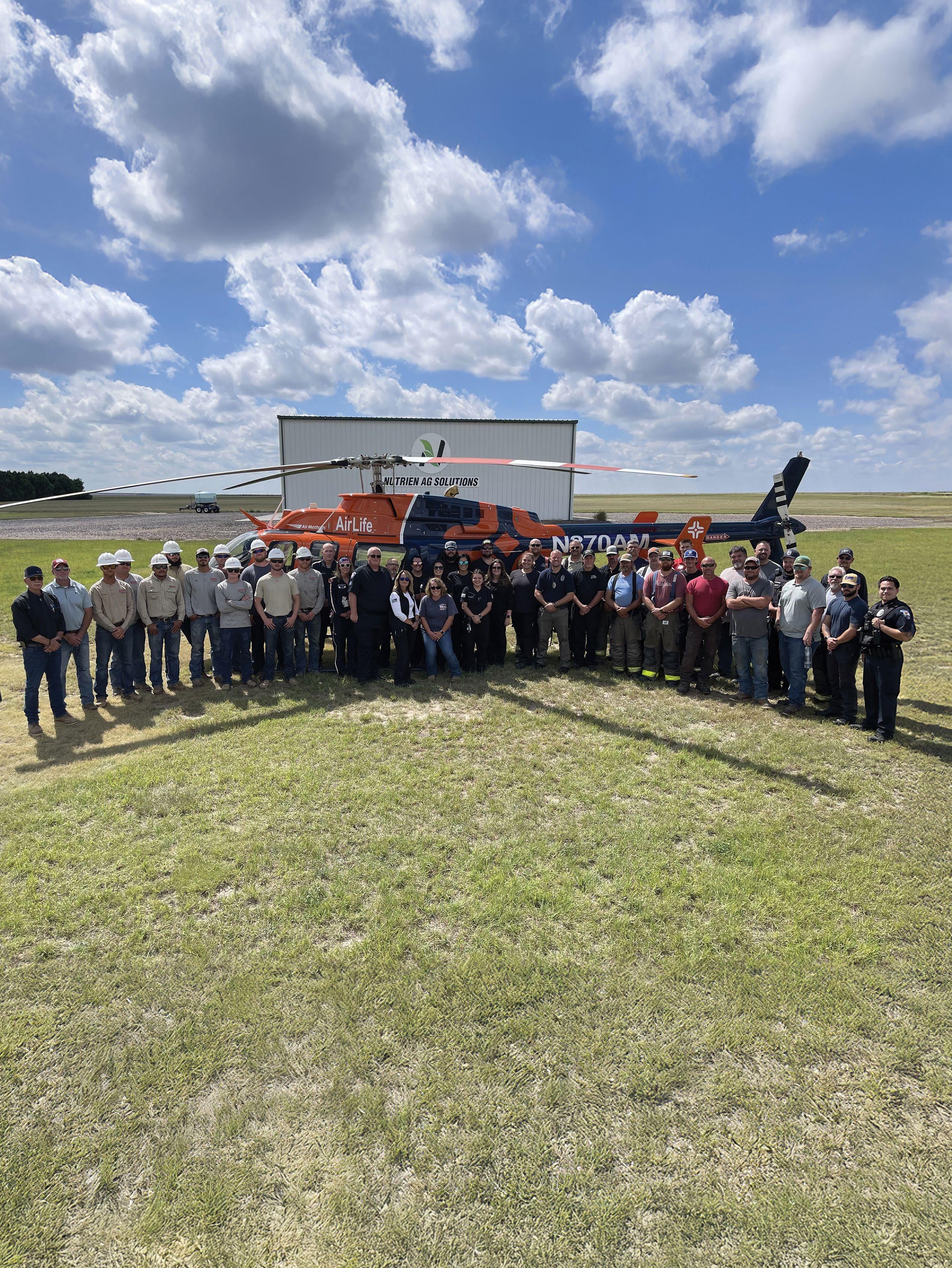
Pole Top Rescue Skills Training
Assisting an unresponsive or unconscious coworker atop a utility pole is a rare occurrence for a lineworker. But pole top rescue skills are vital for people who work in the electric utility industry, as they have the potential to save a life.
That is why linemen from K.C. Electric Association participate in comprehensive pole top rescue training each year: It teaches the tools and confidence to act decisively in an emergency. Annual training also includes the office staff who receive the mock mayday call over the radio from the linemen in the field and simulate relaying the information to 911.
“You hope to never have to use this in the field, but at least our workers will be proficient and know the proper emergency steps they must take if there was ever an event where they had to perform a pole top rescue,” said K.C. Electric Operations Manager Darren Fox.
K.C. Electric conducts pole top rescue and bucket truck self-rescue simulation drills annually as part of its robust safety strategy, but this year the co-op offered more in-depth training with assistance from

K.C. ELECTRIC MISSION
Our mission is to provide our members with safe, reliable service at the lowest cost, while maintaining an environmentally responsible, accountable, and sustainable operation now and in the future.
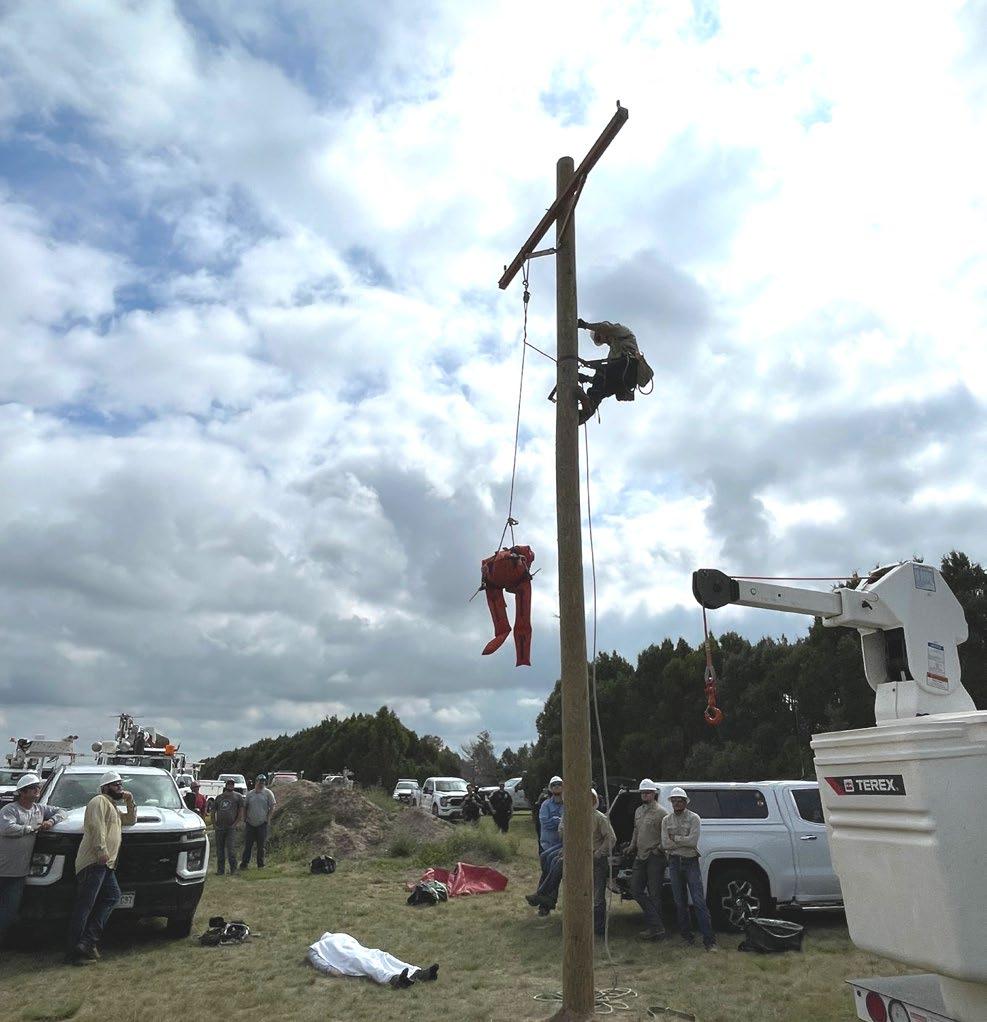

K.C. Electric Staff
David Churchwell General Manager dchurchwell@kcelectric.coop
Bo Randolph Office Manager and CFO brandolph@kcelectric.coop
Phone 719-743-2431
Toll-free 800-700-3123 Web kcelectric.coop
Darren Fox Operations Manager dfox@kcelectric.coop
George Ehlers Member Services Specialist and IT Manager gehlers@kcelectric.coop
Address 422 3rd Avenue Hugo, CO 80821
K.C. lineman Cameron Klann performs a pole top rescue during a training in September.
K.C. Electric linemen conduct a high-voltage safety demonstration for area first responders.

local fire departments, EMT, law enforcement personnel, and an AirLife medical transport helicopter team.
The training in September was held at the airport south of Burlington and included a mayday call to the Kit Carson County communications center. The simulation included performing a pole top rescue with a focus on linemen safely climbing the pole and lowering a rescue training dummy representing a fellow lineworker who had come in contact with an energized conductor and was unresponsive.
Once the lineman had safely lowered the training dummy to the ground, he climbed down the pole and began administrating CPR on the dummy until first responders arrived. When EMTs and fire rescue arrived, they took over care of the injured training
dummy and loaded it onto the AirLife helicopter for further care.
The training simulated a real-life emergency scenario, and K.C linemen demonstrated strength, technique, speed, and safety awareness under pressure.
“Electrical linework is one of the most dangerous jobs in the United States, which is why safety and training exercises like this are a priority for the co-op,” K.C. Electric General Manager David Churchwell said. “It is important that our linecrews in the field train for the worst so they can deliver the best possible outcome in a medical emergency. A pole top rescue that’s skillfully performed is one of the best examples of teamwork, training, and trust in action.”
Pole top rescue is not just a compliance drill, but a life-saving skill that every lineman needs to be ready to perform.
“When something goes wrong, crews don’t get a second chance to figure it out. That’s why we designed this training to be as close to real as possible: climbing, rigging, and lowering an injured coworker while working against the clock,” Churchwell continued.
“Our approach is simple: give K.C. linemen the chance to practice under pressure so that when an emergency happens in the field, the steps are second nature. We put the emphasis on doing the work safely, with the same gear and conditions they’d face in the real world. By the end, every participant knows they can execute a rescue, because they've done it.”
After the training was completed, K.C. Electric crews conducted a high-voltage demonstration for the first responders who attended the training.
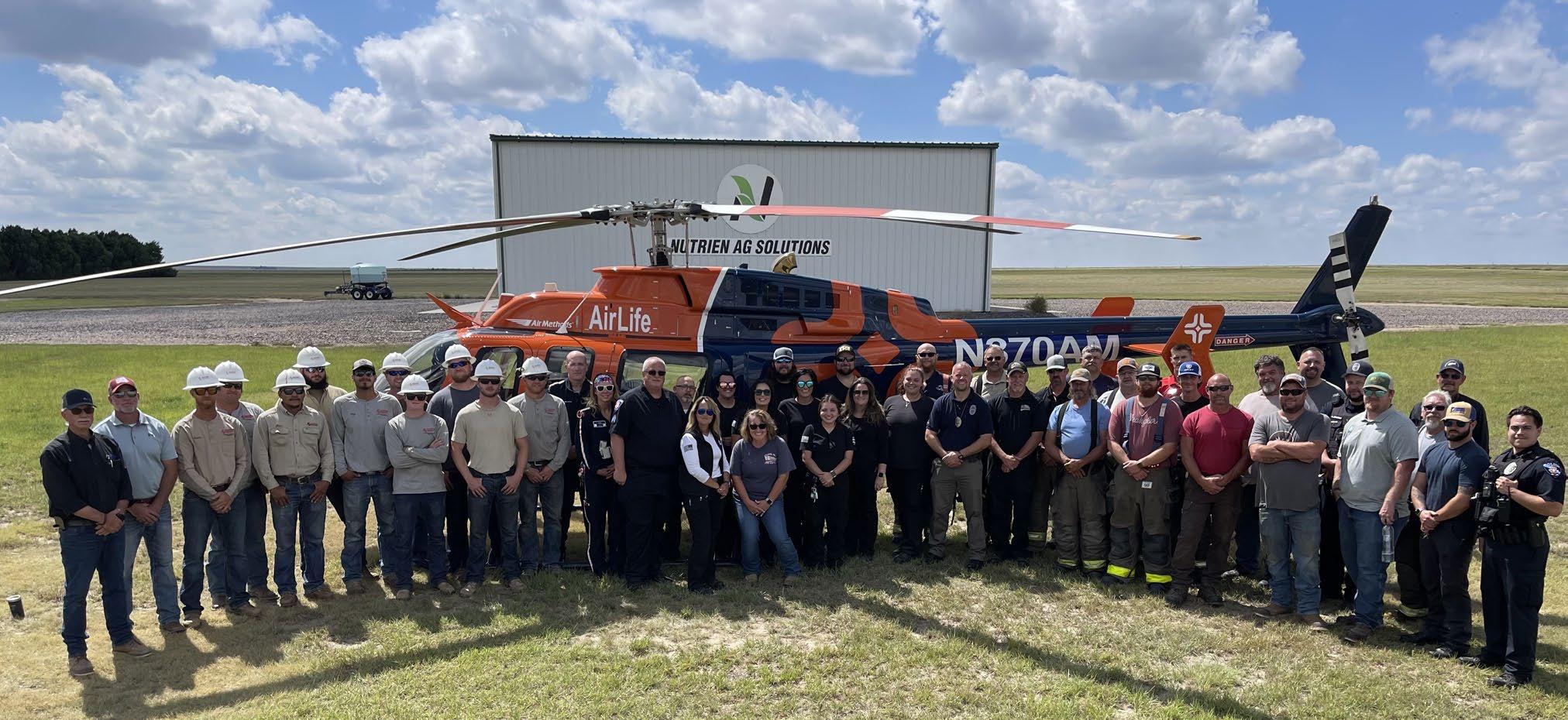
A successful day of training for K.C. Electric Association linemen, Cheyenne and Kit Carson County first responders, and an AirLife helicopter crew.
Local first responders work on the rescue dummy prior to loading it onto the AirLife helicopter.
Step Up to Safety Day
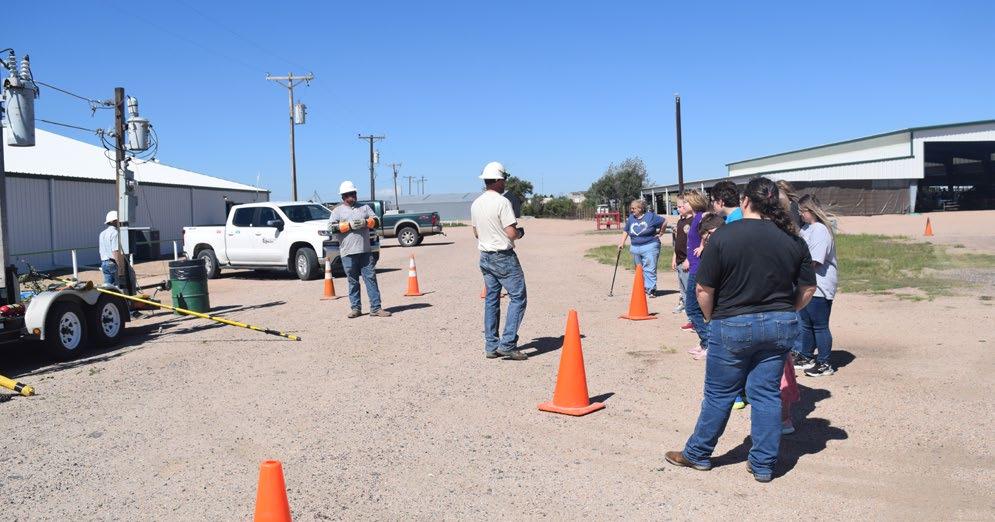
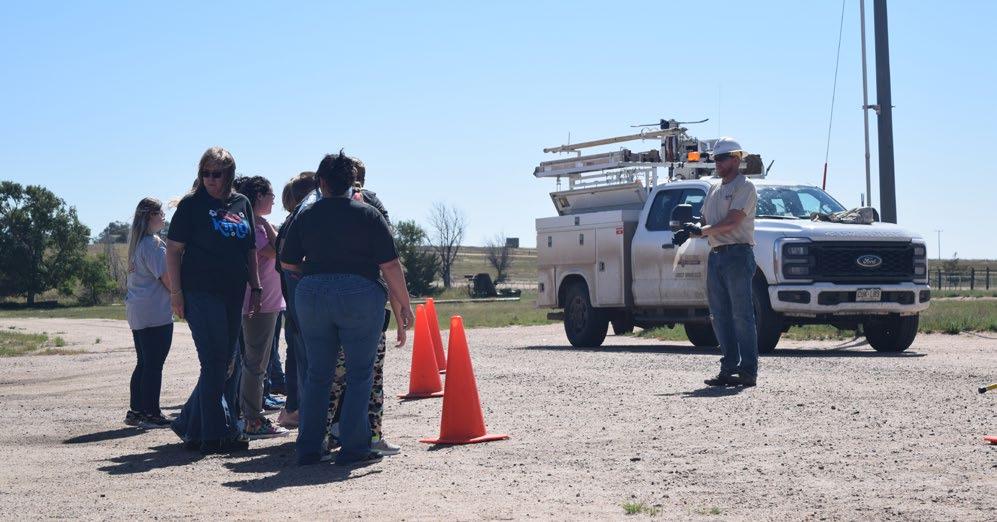
Step Up to Safety Day was held September 10 at the fairgrounds in Hugo for 94 area fourth graders. Students were able to interactively engage with presenters to learn how to stay safe in many different scenarios. K.C. Electric Association linemen were invited to present electrical safety to the students. Linemen brought the co-op’s high-voltage trailer to demonstrate the effect of an electric current on a body, and to teach basic electricity concepts. In the afternoon students witnessed a mock accident to learn about safety prevention and the role of emergency responders in an accident.

Happy THANKSGIVING
from K.C. Electric.
UTILITY SCAMS TIP OF THE MONTH
Scammers will try anything to pressure customers into providing their personal information. If you are ever asked to pay your utility bill through a third-party transaction app, such as Cash App or Venmo, it is a scam. Remember, utilities will never request a payment through a third-party app. Always use authorized payment methods when paying your utility bills.
Source: Utilities United Against Scams
CLAIM YOUR SAVINGS
Each month, K.C. Electric members have a chance to claim a $20 credit on their next electric bill. All you must do is find your account number, call the Hugo office at 719-743-2431, and ask for your credit. The account numbers are listed below. How simple is that?
You must claim your credit during the month in which your name appears in the magazine (check the date on the front cover).
Phillip Witt, Seibert — 11112xxxxx Wyatt Durham, Burlington —11096xxxxx Alex Flores, Arriba — 2140xxxxx Derek Stevens, Burlington — 11199xxxxx
In September, four members called to claim their savings: Ruby Gibbs, Lester Schlichenmayer, Gary Pautler, and David White.
K.C. Lineman Jake Smith (right) and Line Foreman Louden Hornung demonstrate electrical safety to area fourth grade students at Step Up to Safety Day.
K.C. Electric Lineman Jake Smith explains to students the effects of electrical shock on a human body at Step Up to Safety Day in September.
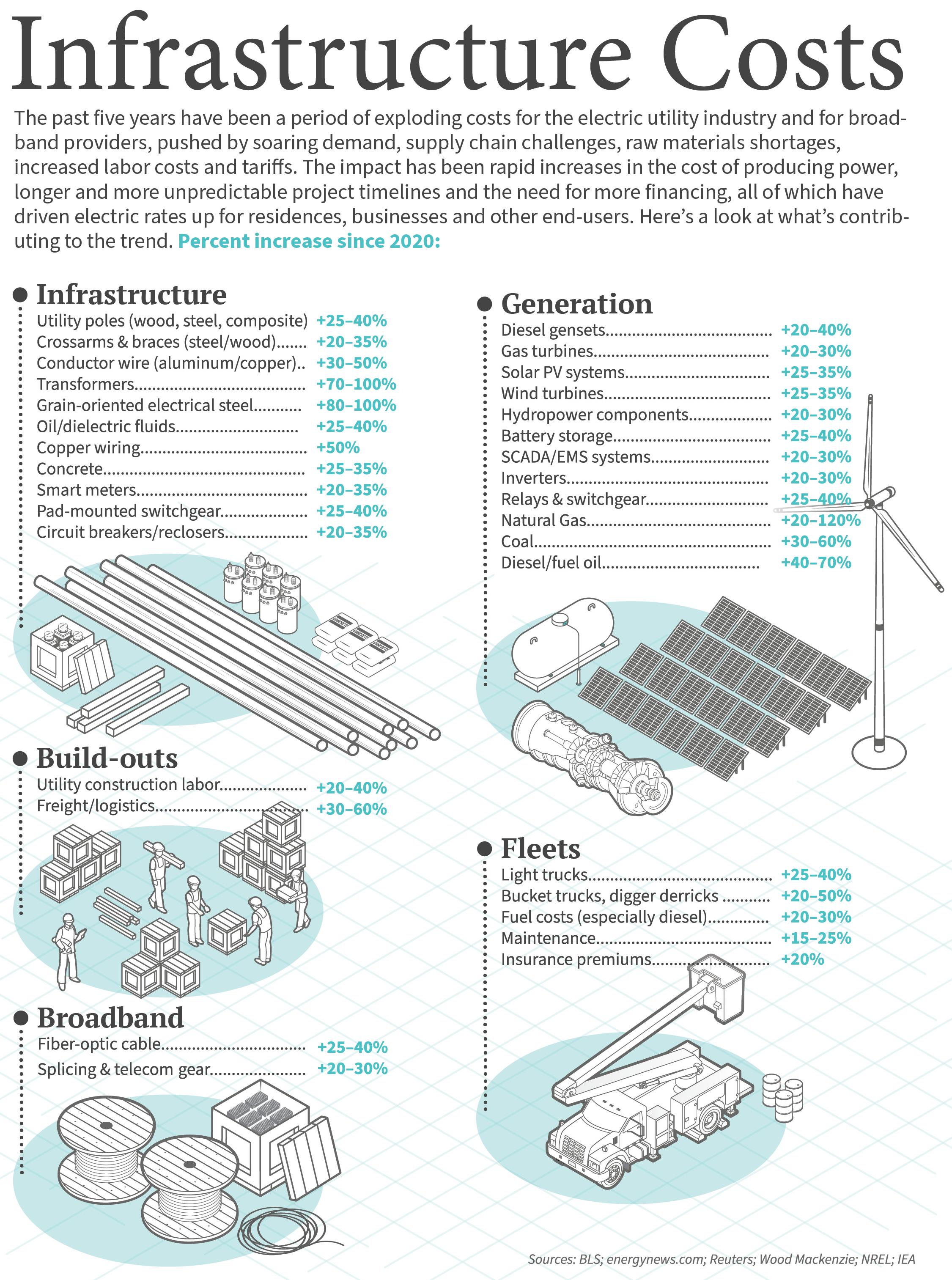

A Day at Morgan County REA
By Maddie Pollart Communications Director
What was your favorite class field trip? The one that remains in your memory to this day? Was it a day at the zoo?
A visit to a museum? What about an afternoon spent at your ... electric company? You may not have experienced the latter, but a group of Morgan County middle and high school students recently did.
On September 11, students visited Morgan County REA headquarters in Fort Morgan as part of their career exploration field trip. The group had a firsthand look at how we at MCREA serve nearly 5,000 members and maintain our system. They also learned the importance of power line safety.

The tour started with MCREA’s hotline safety demonstration, a full-voltage power line display presented by MCREA linemen. The demo showed students the dangers of electricity and highlighted the proper steps to take in situations involving downed power lines. Linemen also discussed the personal protective equipment they wear and procedures they follow to remain safe on the job every day.
This bright group of students was full of great questions: How do MCREA crews fix outages? What does it take to be a lineworker? What equipment do crews use?
They even watched MCREA lineman Nolan Kauffmann climb a power pole. “I loved watching the climbing demo,” one student said. “It was really interesting.”
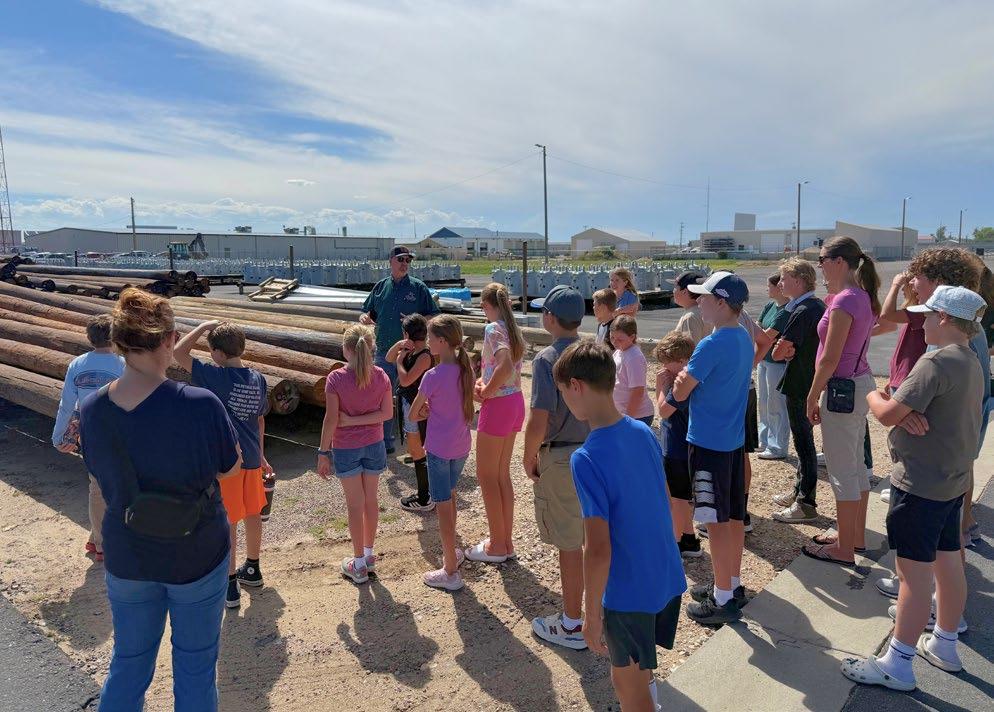
Afterward, the group toured MCREA’s yard where the co-op keeps a stock of poles, conductors, transformers, and more. Here the group discussed the science of electricity and how each piece of material plays a crucial role in getting power to their homes.
“Thank you for teaching me about electricity,” a student shared. “My dad used to be a lineman — now I know what he did.”
Of course, MCREA’s service to its members does not stop along our lines. The students also visited the co-op’s mechanic shop, warehouse, and main office, where they met more of the team dedicated to helping our membership. This gave insight into the many different types of careers that make up an electric cooperative, like finance, communications, engineering, and human resources.
“We all — adults included — learned a lot,” one parent stated. “Thank you!”
It was a true joy for MCREA’s team to share what our co-op does with such polite and thoughtful students. Hosting our first Co-op Field Trip was a success and we hope it is one that students will remember for many years to come.
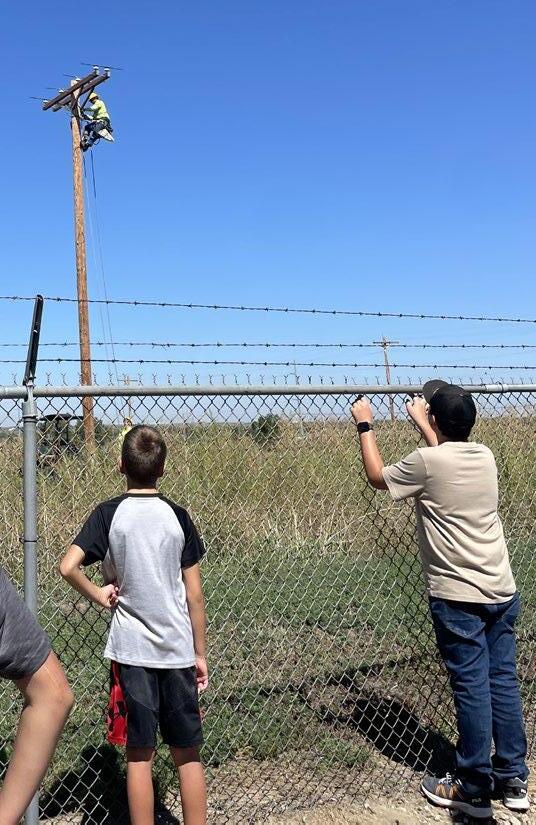
Curtis Berg, MCREA warehouse supervisor, answers questions about the poles the co-op uses throughout its system.
Students watch intently as lineman Nolan Kauffmann demonstrates pole climbing.
The group watches the hotline trailer demonstration presented by MCREA linemen (left to right) Cody Flanigan, Nolan Kauffmann, and Zach Hornecker.
DIRECTOR NOMINATING PETITIONS
Nominating petitions for the Morgan County REA Board of Directors will be available in the MCREA office beginning Monday, December 29, 2025, and must be returned by Friday, January 16, 2026. These dates comply with electric cooperative election regulations set by state law.
The complete MCREA board policy outlining nominating, balloting, and electing directors can be picked up at 734 Barlow Rd. in Fort Morgan.
Director elections will take place during the MCREA Annual Meeting on March 17, 2026, at 6 p.m., conducted virtually through a Telephone Town Hall meeting. Directors who are up for election in 2026 are: District 1 – Tim Peggram, District 2 – David Arndt, and District 3 — Terry Linker.
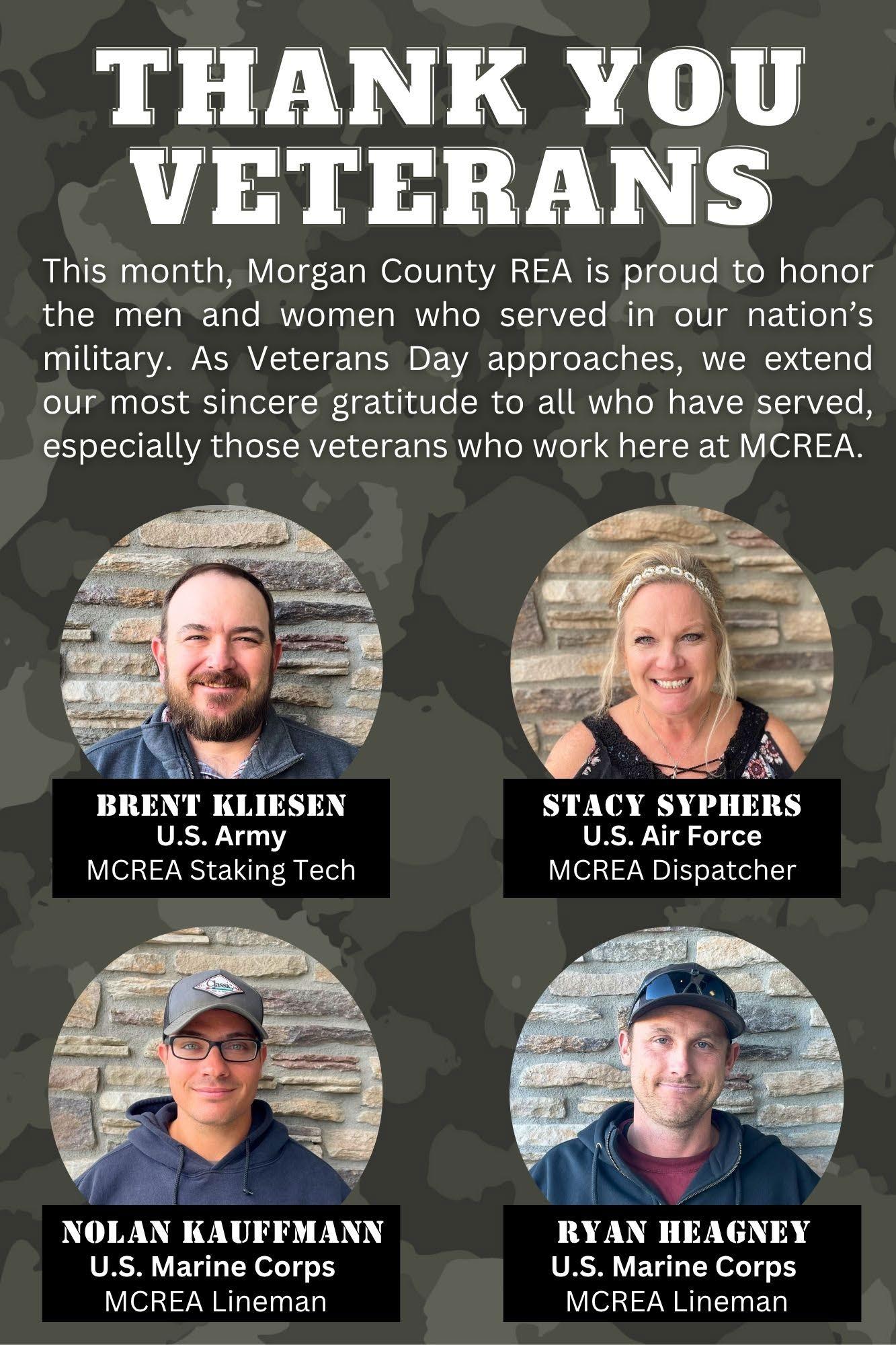


Win a $25 Bill Credit!
Each month, Morgan County REA gives two lucky members a chance at a $25 bill credit, just by reading Colorado Country Life. Congratulations Cecilia Kalous! You spotted your name in the September issue and called to claim your bill credit. There are two more member names and their account numbers hidden somewhere in this issue. If you find your name and account number call MCREA’s communications department at 970867-5688 by November 28 to claim a $25 credit on your next bill.
Adventure is Calling
Apply for next summer’s youth trips
Each year, Morgan County REA selects a student from its service territory to attend Electric Cooperative Youth Tour in Washington, D.C., and another student to attend Cooperative Youth Leadership Camp in Steamboat Springs. These are two phenomenal opportunities for local students to meet new people and enhance their leadership skills, all while learning more about electric cooperatives.

Youth Tour will take place June 15-21, 2026. Hundreds of students from across the United States, sponsored by their local electric co-op, gather in our nation’s capital where they explore historical landmarks like Mount Vernon, Arlington National Cemetery, and many of the memorials and monuments that Washington, D.C., is known for. Students also will tour the Capitol, where they will visit with U.S. Senators and Representatives. The tour is intended to help students learn more about our nation’s history and how electric cooperatives have played a role. (Anna Hill, acct. #xxx8300)
“It was an absolutely amazing experience,” a past Youth Tour participant shared. “The places we went held such significance in American identity. I met incredible people and had an incredible time.”
Youth Camp will take place July 11-16, 2026,
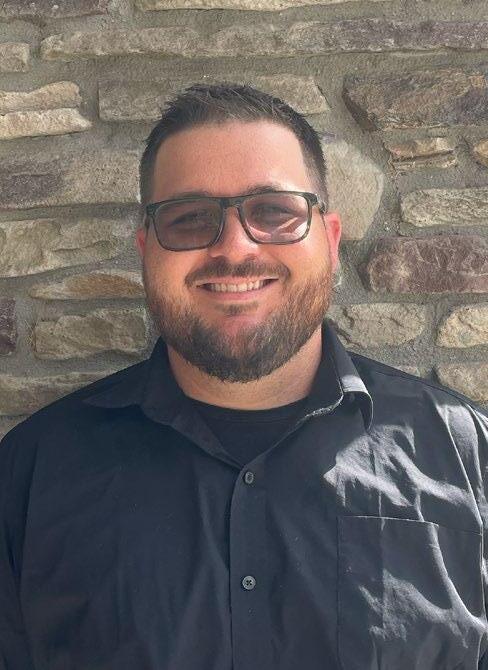

near Steamboat Springs. Students from Colorado, Wyoming, Kansas, and Oklahoma — also sponsored by their home co-op — enjoy a week of outdoor fun in the beautiful Rocky Mountains. Activities include rafting the Colorado River, visiting the top of Mt. Werner, swimming, sand volleyball, and more. At camp, students learn about electric co-ops by creating their own cooperative, complete with director elections. The group also takes a tour of the Craig Power Plant and gains a better understanding of how power is delivered to homes and businesses.
“I will always remember the people I met throughout this trip,” a camper recalled. “I have made some great friends and I know those relationships will not stop now that camp is over.”
One of the best things about these amazing trips? They are free to attend, with all expenses covered by Morgan County REA.
The deadline to apply for Youth Tour and Youth Camp is Friday, December 19. Applications are open to high school sophomores, juniors, and seniors living within the outer boundaries of MCREA’s territory, whose parents or grandparents are MCREA members.
Visit mcrea.org/youth-programs and click on the Youth Camp or Youth Tour buttons for application information. If you have any questions about these programs, please call MCREA’s office at 970-867-5688.
MEET TREY MONTEL
Morgan County REA welcomes Trey Montel as the cooperative’s new data specialist. A Fort Morgan native, Trey brings more than a decade of experience in the oil and gas industry, especially in application and analysis of technologies in the field.
“I’m really looking forward to learning new things,” Trey shared about joining the MCREA engineering department.
In his spare time, Trey considers himself a bit of a “gearhead” and likes working on cars or computers. However, he most enjoys spending time with his wife and their two daughters.
Welcome to the team, Trey!
Don’t Let Energy Slip Through the Ceiling
A quick guide to insulation
Upgrading your attic insulation is one of the easiest and most effective ways to lower your energy bills, make your home more comfortable, and boost energy efficiency year-round. Older homes can save as much as 15% on energy costs by improving attic insulation.
STEP 1:
SEAL AIR LEAKS
Before adding insulation, take care of air leaks. Common trouble spots include around recessed lighting, chimneys, attic hatches or pull-down stairs, pipes, ductwork, and wiring. Seal gaps around these areas with caulk, expanding foam, or weather stripping. This helps keep warm air in during winter and hot air out during the summer.
STEP
2: UNDERSTAND R-VALUES
R-value measures how well insulation resists heat flow based on its type, thickness, and density — the higher the number, the better. For mild climates, recommendations are R-30 to R-38 (10-14 inches). For cold climates, you will need R-49 or higher (16-18 inches).
STEP 3: PICK THE RIGHT TYPE
There are two main types of attic insulation:
1. Batt or roll insulation:
• Must be cut precisely to avoid gaps, especially around obstructions like pipes and vents.
2. Blown-in or loose fill insulation:
• Installed with a machine that “blows” insulation into place.
• Fills gaps more evenly; great for hardto-reach areas.
• Blown-in cellulose is the top pick for attics due to its high R-value, good coverage, and air-sealing benefits.
STEP
4: PLAN FOR STORAGE
It’s tempting to use the attic for storage, especially for those holiday decorations, but if you are looking to maximize efficiency, store them elsewhere. If you

store items in your attic, do not flatten the insulation. Build a raised platform high enough to keep insulation at the recommended depth.
STEP 5: CHECK OLD WIRING
If your home is older, inspect attic wiring before insulating. Cracked or brittle wire insulation can be a fire hazard. Have a professional electrician replace it if needed. (Lauren Kope, acct. #xxx5100)
STEP
6: INSULATE THE ATTIC HATCH
Whether you have an attic hatch or a dropdown ladder, this opening can leak lots of air if it is not sealed properly.
For standard hatches:
• Add insulation to match your attic’s R-value.
• Upgrade to a preinsulated panel or ¾-inch plywood.
• Install weather stripping and a dam to prevent loose-fill from spilling.
For dropdown ladders:
• Add an insulated cover box in the attic.
• Seal the frame with foam or weather stripping.
• Be sure to leave room for the folded ladder.
FEEL THE DIFFERENCE
A well-insulated attic means lower energy bills and a more comfortable home, whether it is blazing hot or freezing cold outside. Pick the right insulation for your space — your future self (and wallet) will thank you.
BLUE SANTA DROP OFF SPOT
The Fort Morgan and Brush police departments are gearing up for the holiday season. Each year, Blue Santa delivers food and toiletry boxes to older people in need across Morgan County.
Between November 2-19, members can drop off nonperishable food items and toiletries at Morgan County REA. Help spread cheer and support your community this holiday season!
Photo by irina88w/iStock/Getty Images Plus via Getty Images

Powered by Purpose Rate Forecast for 2026 and Beyond
By Ruth Marks CEO
At Mountain View
Electric
Association, everything we do is rooted in reliability and powered by purpose to serve our members, neighbors, and communities. As a cooperative, we are guided by principles that set us apart from investor-owned utilities. We don’t answer to distant shareholders; we answer to our members.
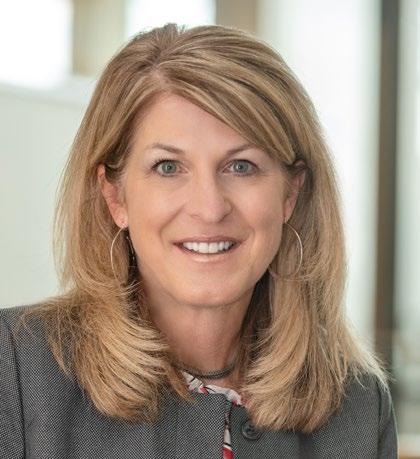
Commitment to our co-op principles and dedication to our co-op members drives our decisions and long-term strategic planning. MVEA works diligently to manage costs and keep rates as competitive as possible. At the same time, we are one of the fastest growing electric co-ops in Colorado. Increasing demand for electricity, paired with industry-wide shifts toward clean energy, increasing material costs, and across-the-board inflationary pressures, all impact the cost of providing reliable power.
In addition to those factors, in September, our wholesale power supplier, Tri-State Generation and Transmission Association, announced a 7.5% rate increase beginning in 2026. Like other utilities across the country, Tri-State also faces rising costs from higher tariffs, regulatory pressures, and increased market power prices. Because wholesale power accounts for 62% of MVEA’s operating expenses, this change directly affects our cooperative. As a not-for-profit electric co-op, we don’t have the option to absorb Tri-State’s increase without adjusting our rates as well.
Anticipating that change was on the horizon, earlier this year we hired an independent rate consultant to
On-Bill Repayment Program (OBR)
Take advantage of the On-Bill Repayment program for a simple and transparent low-interest financing option for energy efficiency upgrades. No money down. No credit check.
+ Windows & Doors + Insulation
+ Whole-home or Attic Fans + EV Chargers
+ Electric HVAC Systems + And More!
+ Home Energy Audits
www.mvea.coop/electrify-and-save
complete a Cost-of-Service Study (COSS), which helps us analyze what it costs to serve each member rate class fairly. This study is a critical tool in designing rates that reflect the true cost of service and additional opportunities for members to manage their bills. Our focus remains on balancing increased power costs with long-term rate stability for our members.
What can you expect? Looking ahead into 2026 and beyond, there will be changes. While the details are not final, we anticipate making an announcement by the end of the year. In today’s energy landscape when it comes to the cost of wholesale power, when power is used is just as important as how much is used. MVEA is currently researching a new rate structure that will help lower the bills of members who adjust their energy usage to non-peak times of the day. Simple changes — like when you run major appliances — can make a meaningful difference in reducing our overall wholesale power supply costs.
Please know that we remain committed to transparency and communication throughout this process. From tapping into federal grants that offset the cost of system improvements to launching innovative programs to help our members save energy and money, dedication to MVEA’s co-op members and commitment to providing safe, reliable, and affordable electricity are at the heart of every decision that we make.
Visit www.mvea.coop/rates to learn more about MVEA’s rates. For additional resources to save energy and money, visit www.mvea.coop/ energy-resource-center
PROGRAMS TO SAVE ENERGY & MONEY
Energy Efficiency Rebate Program
From select appliances to heat pumps, and electric mowers to EV charging equipment, there is a rebate to fit the needs of nearly every member who wants to save money and energy.
+ Smart Thermostats + Electric Heat Pumps
+ Select Appliances + EV Chargers
+ Electric Bicycles + And More!
www.mvea.coop/rebates
Two Leaders Join Board
Beals and Vanderschuere bring expertise, vision to MVEA
By Erica Meyer Community Relations Specialist
Mountain View Electric Association is proud to welcome Jim Beals (District 4) and Wayne Vanderschuere (District 3) to its Board of Directors. Both men bring with them decades of leadership experience and a strong commitment to serving MVEA’s members.
Beals, a retired energy professional, grew up on a family farm in South Dakota where he learned the importance of reliable electricity in rural life. His career included leadership roles with Honeywell Defense Avionics, Emerson Electric, and Edison IntelliGrid, with a focus on grid reliability and communications systems. He holds a degree in Electrical and Software Engineering and an MBA. After moving often for work, Jim and his wife, Jan, settled in Colorado three years ago and are active in the community. “I was looking for a way to give back, and MVEA was the perfect fit,” he said. “I like the cooperative model, we don’t answer to investors — we answer to our members.”
Vanderschuere, a United States Naval Academy graduate and former Marine Corps officer, has extensive utility leadership experience with Colorado Springs Utilities, Duke Energy, and Consolidated Edison. He has managed multimillion dollar budgets and large teams across customer service, energy, and water services. He currently serves as President of the Board for Donala Water & Sanitation District, one of MVEA’s largest customers, and has also completed leadership programs with Leadership Pikes Peak and the University of Virginia’s Darden Graduate School. “I am honored to serve MVEA’s members and look forward to helping guide the cooperative through industry changes while ensuring we continue to provide safe, reliable, and affordable power,” Vanderschuere said.
Together, Beals and Vanderschuere bring technical expertise, strategic vision, and community focus to the Board. Their leadership will help guide MVEA as it modernizes infrastructure, expands access to high-speed fiber internet services, and continues putting members first.
Visit www.mvea.coop/board-of-directors to learn more about MVEA’s Board of Directors.
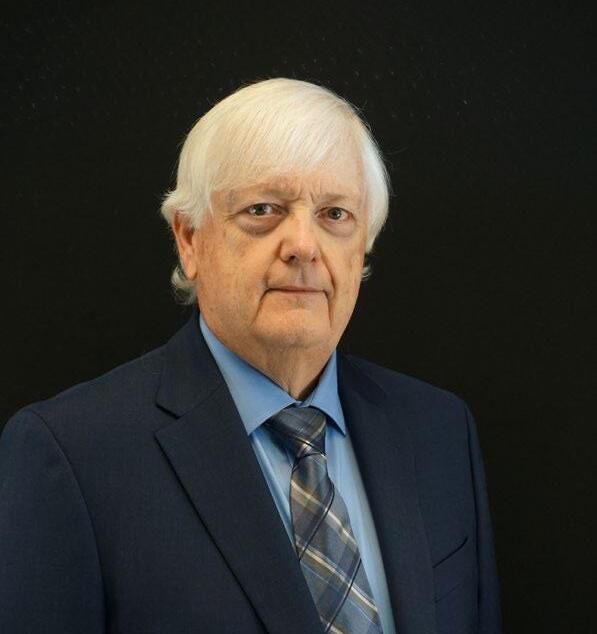


High School Sophomores & Juniors

Your Leadership Adventure Awaits
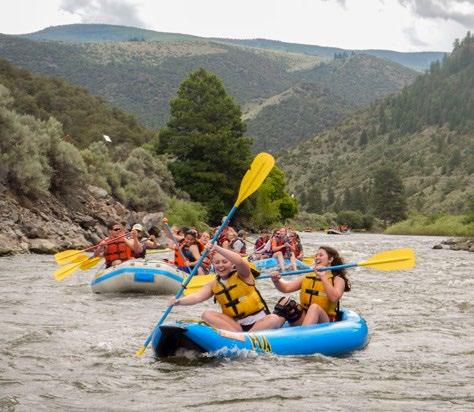
LAST CALL FOR ENTRIES
High school sophomores and juniors—pack your bags (and your leadership skills)! You’re just a couple of short questions away from a chance to win an all-expenses-paid trip of a lifetime through MVEA’s Leadership Trip Contest.
Entry Deadline | Tuesday, November 11, 2025 Start Your Adventure | www.mvea.coop/tripcontest
MVEA District 4 Board Director Jim Beals
MVEA District 3 Board Director Wayne Vanderschuere
A Helping Hand to Those in Need
LEAP and Energy Outreach Colorado Bill Payment Assistance
The Low-Income Energy Assistance Program or LEAP is a federallyfunded program that helps eligible hard working Colorado households pay a portion of their winter home heating costs. The program provides home heating assistance to households with income up to 60% of the Colorado State Median Income. Applications are accepted from November 1 through April 30.
To apply, or for additional program information, visit the LEAP website at https://cdhs.colorado.gov/leap or call (866) 432-8435.
Energy Outreach Colorado brings together a network of industry, state and local partners to support, stabilize, and sustain Coloradans to afford their energy needs. Its programs include: bill payment assistance, heating system repair/replacement, energy efficiency upgrades, energy education, and access to state programs (such as LEAP) that work in partnership with their services.
Visit www.energyoutreach.org to learn more about programs and how to apply for assistance.


Holiday Season
Program Spotlight
Give the Gift of Light this Holiday Season
Looking for the perfect gift this holiday season? It’s easy to give a Gift of Light credit on a Mountain View Electric Association account for a friend or relative! You choose the amount of the credit and we help with the rest. For more information, call (800) 388-9881 or visit www.mvea.coop/gift-of-light
Holiday Lighting Contest Sponsorship
MVEA is proud to light up the night with holiday cheer! Nonprofit organizations and homeowner organizations within MVEA’s service territory can partner with MVEA to provide electric bill credits for the winners of residential home lighting contests held in November and December. For more information about organization eligibility and contest sponsorship, email communications@mvea.coop or call (719) 494-2657.

Kevin L. Paddock, District 5 President
Barry R. Springer, District 6 Vice President
Jim Riggins, District 7 Secretary-Treasurer
Joseph D. Martin, District 1 Assistant Secretary
Rick L. Gordon, District 2
Wayne Vanderschuere, District 3
Jim Beals, District 4
Telephone Numbers
Toll-Free: (800) 388-9881 (719) 495-2283
Website www.mvea.coop
Falcon Office 11140 E. Woodmen Road Falcon, CO 80831
Limon Office 1655 5th Street • P.O. Box 1600 Limon, CO 80828
Office Hours
Monday - Thursday 7 a.m. to 5:30 p.m.
Stay Connected: Like. Follow. Share.

www.facebook.com/@MVEAInc
www.linkedin.com/company/ mveainc www.x.com/@MVEAInc
www.youtube.com/@MVEAInc
www.instagram.com/MVEAInc
Mission Statement
To provide our members safe, reliable, affordable, and responsible electric service and access to broadband services.
This Association is an equal opportunity provider and employer. Make sure to connect with MVEA on social media for timely service and program updates.
Capital Credits 101
What are they, anyway?
As an MVEA member, you are more than a customer — you are both a member and an owner of the cooperative. In fact, you invest in the cooperative each time you pay your monthly electric bill. Your investment in the cooperative helps to ensure the financial health and stability of the co-op and is returned to you through the allocation and retirement of capital credits. Even though it is an important aspect of electric co-op membership, the allocation and retirement of capital credits can be a bit confusing.
Electric cooperatives operate at cost — collecting enough revenue to run the co-op without the need to generate profits like investor-owned utilities. Our rates and fees are set by an elected Board of Directors to generate revenue to cover operating costs, pay debts on construction loans, and provide an emergency financial reserve. Any surplus revenue generated is reinvested to improve services or returned to members as capital credits. It’s an aspect of being a co-op member that is unique: when financial conditions allow, every member of an electric co-op gets a piece of the pie.
ALLOCATION | MVEA members receive a capital credits allocation every year after the cooperative’s audit for the previous year is complete. Net margins — the difference between MVEA’s income and its expenses — are allocated (or assigned) to members who belong to the cooperative during the year in which a net margin is generated. An allocation is your share of the net margins MVEA sets aside into a separate account with your name on it. Capital credits allocation
notices are provided on your billing statement every November. Make sure to look at your November bill to review your 2024 capital credits allocation.
RETIREMENT | A retirement is the amount of cash you are paid from your capital credits allocation. When the Board deems the co-op financially capable of doing so, capital credits are paid to members. Dedication to fiscally responsible business practices and planning has enabled MVEA to retire more than $83.5 million in capital credits back to members since MVEA’s first retirement. The amount retired is decided annually by the MVEA Board of Directors. Details about the 2025 retirement will be available in December.
If you have questions about your capital credits allocation, please call 800-388-9881. To learn more, visit www.mvea.coop/capital-credits.
Capital Credits
In a Co-op, Every Member Gets a Piece of the Pie!
To date, MVEA has retired over $83.5 million in capital credits back to members!
Check your November bill for your 2024 capital credits allocation. Read the December issue of Colorado Country Life for a capital credits retirement update. Learn more at www.mvea.coop/capital-credits.


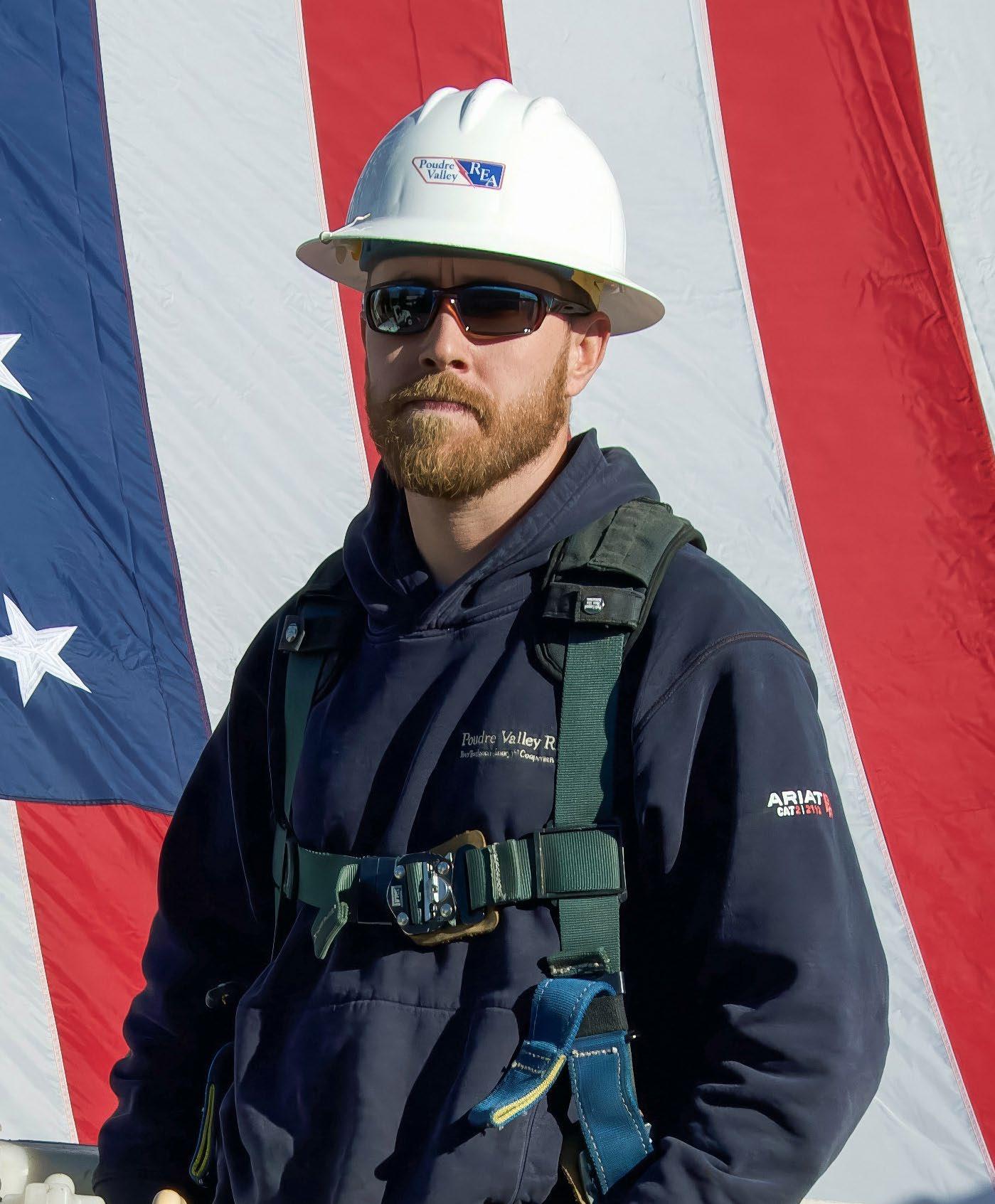


Value You Can Count On
BY JEFF WADSWORTH PRESIDENT & CEO
When others raise rates, we have held the line. At Poudre Valley REA, we know how much stability matters, because behind every electric bill is a family making plans and a community working hard to thrive.
While many utilities have implemented double-digit rate hikes, our residential electric rate has changed just 5% in nearly a decade and our residential rate proudly ranks lowest in Colorado.
That kind of stability doesn’t happen by accident. It’s the result of careful planning and a commitment to doing right by the people we serve.
A Power Cost Adjustment (PCA) of $0.00150 per kWh will appear as a line item on bills and is tied to Tri-State’s latest increase –averaging $1.50 per month.
The Peak Demand Charge was already scheduled to change in 2026 from $0.72 to $1.00 per kW – averaging $2.15 per month.
To put this into dollars and cents, when compared to 2025, if you used the average amount of electricity per month (1,000 kWh and 7.69 kW), you would likely see a total combined increase of $3.65.
COLORADO’S LOWEST ELECTRIC RATE
LOOKING AHEAD TO 2026
Tri-State, our electricity supplier and largest expense, has increased the cost we pay to purchase electricity by 14% since 2023.
For years we have focused relentlessly on increasing efficiency to deliver maximum value to you. When combined with prudent financial planning from your Board of Directors, we can lessen the impact of Tri-State’s increase.
THE IMPACT TO YOU
Starting with January bills, residential members will see two changes. Together, these changes will result in a combined increase of approximately 3%.
Even with this adjustment, PVREA will still have the lowest residential electric rate in Colorado.
We know costs will undoubtedly rise around us. But backed by our strong and continued financial planning, we're committed to doing all we can to remain the most affordable electricity provider in Colorado no matter what changes come our way.
ADDING VALUE
On pages 8–9 of this issue, you can learn more about how we remain dedicated to keeping rates predictable and low-cost while offering you the programs, services, and billing options that add value to your life.
On behalf of all of us at your co-op, we wish you a happy and blessed Thanksgiving holiday!
ABOUT YOUR CO-OP
PVREA serves energy solutions to more than 57,000 homes and businesses in Boulder, Larimer, and Weld counties. We are a memberowned co-op, led by those we serve.
OUR MISSION
We are committed to providing safe, reliable, efficient energy solutions with exceptional service to our members.
CONTACT US
1.800.432.1012 pvrea@pvrea.coop www.pvrea.coop
MAILING ADDRESS
Poudre Valley REA
7649 REA Parkway Fort Collins, CO 80528
SOCIAL facebook.com/PoudreValleyREA instagram.com/poudre_valley_rea youtube.com/PoudreValleyREA
BOARD OF DIRECTORS
Chair
Peter Hyland
Weld County
Vice Chair
Bryan Ehrlich
Larimer County
Secretary Thaine Michie
Larimer County
Director
Steven Anderson
Larimer County
Director
Director
Rick Johnson
Larimer County
Director
Jan Peterson
Larimer County
Director
Jack Schneider
Weld County
Director
Ron Sutherland
Boulder County
Sheryl Dryer Henderson
Larimer County
Honoring Our Veterans
Tuesday, November 11
This Veterans Day, and every day, we proudly salute the brave men and women who have served our country — including those within our workforce and the members throughout our cooperative membership.
To all who have served and to the families who support them, thank you!
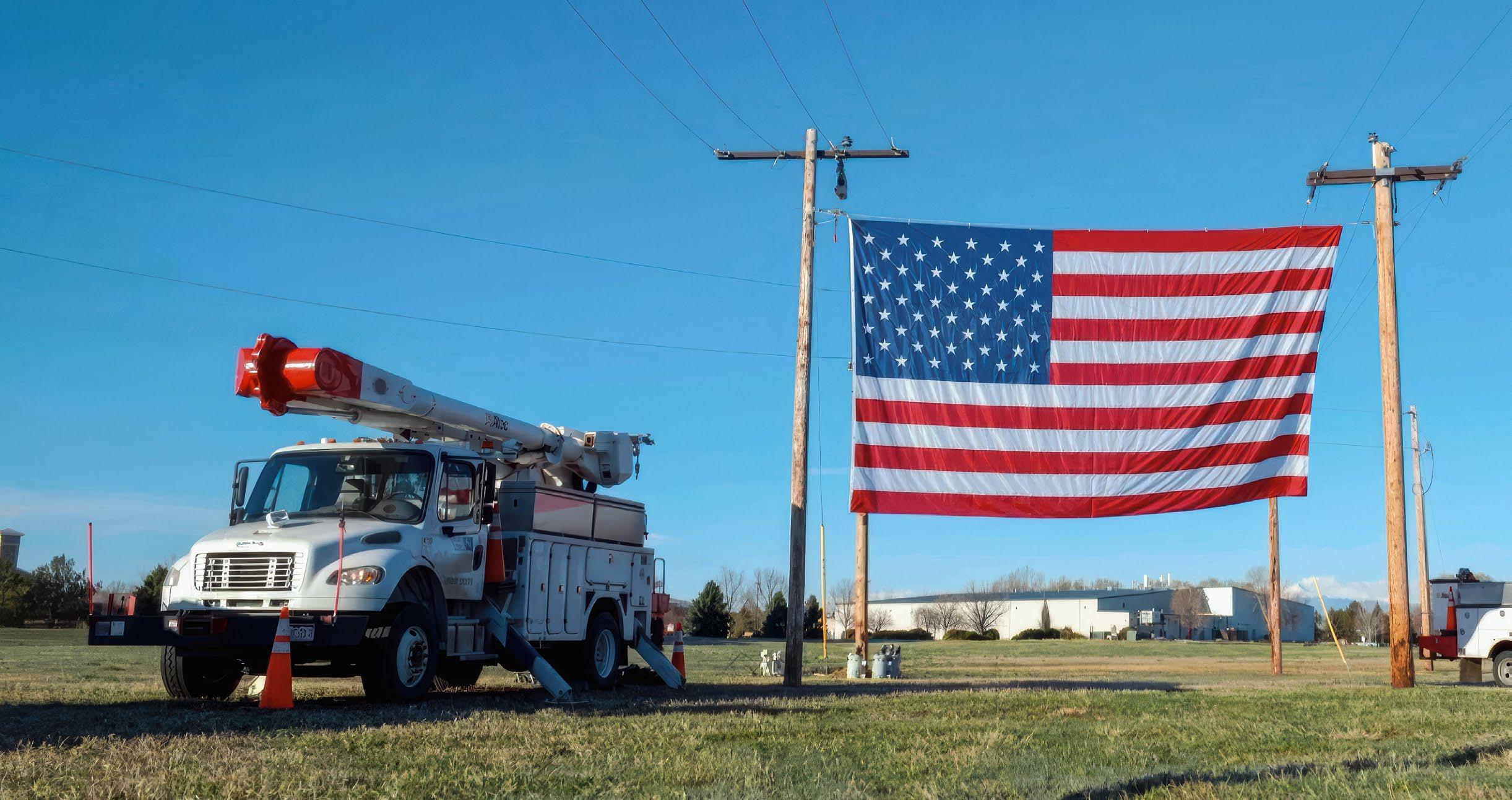
SAFETY CORNER
Electric Blanket Safety
Stay safe & warm this winter.
• Inspect for frayed wires, damaged connectors, holes, or tears.
• The blanket should not have any charred or dark areas.
• Electric blanket wires should never be bent or tucked under a mattress.
Power Peak Rewards
• Store your blanket rolled or flat to put less stress on the internal wires.


• It’s better to warm your bed with the blanket before going to bed (don’t leave it unattended, though), and turn it off before climbing in.
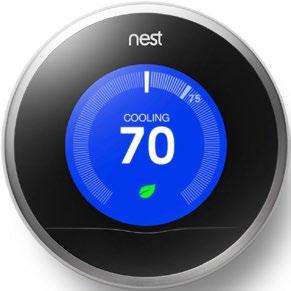
Our smart thermostat rewards program has ended for the year. Participating members will receive their $30 bill credit this month.
Power Peak Rewards runs from May 1 to October 31 each year.
Get rewarded to help manage the total electrical load on our system during the cooling season.
Must be a PVREA member with central air conditioning or a heat pump and working Wi-Fi to participate.
Earn one $50 sign-up bonus plus the annual $30 participation reward. Conditions apply.
Enroll for rewards next year at www.pvrea.coop/power-peak-rewards

On The Cover: Jonathan Hampton, PVREA Journeyman Lineman, U.S. Army Veteran

Delivering Value that Matters
When faced with two significant increases in our single greatest expense, learn how your cooperative is committed to keeping rates stable and low-cost for years to come.
Tri-State, our wholesale electricity supplier and largest expense, has significantly increased their power costs by 14% over the past 3 years.
However, due to our relentless focus on increasing efficiency to deliver maximum value to you, combined with prudent financial planning from your Board of Directors, we can lessen the impact of Tri-State’s increases so your cost of power remains modest and manageable.
Our promise to you is to continually deliver low-cost, predicable power alongside the programs, services, and payment options that add value to your life.
2026 RATE COMPARISON
Residential Rate - Schedule A
The following adjustments will take effect on January 2026 bills.
The Power Cost Adjustment (PCA) Charge of $0.00150 per kWh will add about $1.50 per month.
The Peak Demand Charge will increase from $0.72 to $1.00 per kW, adding about $2.15 per month.
The total combined increase for an average residential member (1,000 kWh and 7.69 kW), will be about $3.65 per month.
For a breakdown of changes to all rate types, visit www.pvrea.coop/rates
Based on 1,000 kWh, 7.69 kW
IMPACT TO AVERAGE HOUSEHOLD
- Schedule A
Based on 1,000 kWh, 7.69 kW
The Poudre Valley Difference

AVERAGE PRICE PER KWH: RESIDENTIAL
Even with the 2026 adjustment, PVREA members will save over $300 annually compared to the state average!
EARN REWARDS
Earn bill credits for using your smart thermostat or electric vehicle. More rewards programs are on the horizon!
Find your rewards at www.pvrea.coop

SPEND LESS ON ENERGY
PVREA RATES, LASTING VALUE
Between 2017 and 2026, the price you pay for electricity will have increased by only about 5%.
That level of stability is rare, especially over nearly a decade.
Members on Prepaid Billing often spend 10-15% less for their energy-related costs.
Pay for electricity like filling up your gas tank — before you use it.
To explore the benefits of Prepaid Billing, scan the code!
PREPAID
USED REMAINING PAYMENT
PAYBACKS TO MEMBERS
In September, we returned $2 million in previous profits to our members who received service in 1994, 1995, 2006, and 2024, or any combination of those years.

Learn more about member credits at www.pvrea.coop/member-credits

SAVE ON PRINTING & POSTAGE
Mailing paper bills is expensive — and those costs are shared by all PVREA members.
Scan to sign up or read about the benefits of Paperless Billing!


Celebrate Small Business Saturday
November 29
Support small businesses in our Northern Colorado community.
Get local (and national) discounts through the Co-op Connections membership program — a free perk for our members and businesses.

Find discounts at www.pvrea.coop/co-op-connections

Daylight Saving Time Ends Nov 2
As clocks roll back an hour at 2am on Sunday, Nov 2, we recommend you use this time to make a few energysmart moves around the home.

• Adjust your programmable thermostat to match your new fall schedule.
• Check and replace HVAC filters to keep your system running efficiently.
• Seal up drafts around windows and doors to keep warmth in and cold out.
• Replace batteries in your smoke and/or carbon monoxide detectors.
Find more energy-savings tips at www.pvrea.coop
Closed for the Holidays
The PVREA office & lobby will be closed Thursday 11/27 & Friday 11/28.
NOVEMBER 2025
Energy Efficiency Tip of the Month
Please enjoy your Thanksgiving responsibly.


With the holiday season approaching and more time spent in the kitchen, consider ways to save energy in the heart of your home.
Source:
energy.gov
When possible, cook meals with smaller, energy efficient appliances, such as toaster ovens, slow cookers, and air fryers. When using the range, match the size of the pan to the heating element. Keep range-top burners and reflectors clean so they reflect heat more efficiently. After your holiday meals are complete, load the dishwasher fully before starting the wash cycle.

Why Your Electric Bill is Rising
By Jon Beyer CEO
As your member-owned electric cooperative, we’re committed to providing safe, reliable service at the lowest possible rates.
Like many of you and many of our local businesses, we are also facing higher expenses, and our board has taken the step of increasing our rates as of January 1, 2026.

We think it’s important for you to know exactly why your costs for electricity are changing. This column will break down the factors driving the increase in power delivery costs. For our residential members we have a two-part rate. We have the Service Availability Charge and the kWh or energy charge.
SERVICE AVAILABILITY CHARGE INCREASE
The monthly Service Availability Charge for Residential Rate 1 customers (which includes most SDCEA accounts) will increase by $3.85 per month. This adjustment was approved by SDCEA’s Board of Directors in 2023 as part of our long-term financial plan for projected costs.
The Service Availability Charge increase varies by rate class. You may view updated rates for all rate classes and projected Service Availability Charge increases through 2027 by visiting our Bylaws, Rates, and Policies section on our website. Please note that these projected increases are subject to annual review.
WHAT THE SERVICE AVAILABILITY CHARGE COVERS
Your Service Availability Charge helps fund essential services that keep your electricity flowing reliably, including:
• Infrastructure maintenance and upgrades to ensure safe, dependable service
• Operational costs including materials, taxes, and labor
• Consumer services such as outage response and system software
• Compliance with regulatory requirements to meet safety and reliability standards
By covering these fixed costs, the Service Availability Charge guarantees that our system is ready to deliver power to your home or business 24/7 and that our crews are ready to respond to outages immediately.
ENERGY CHARGE ADJUSTMENT
The second adjustment is an increase in our energy charge due in part to increased costs from our wholesale power supplier, Tri-State Generation and Transmission. The Energy rate increase will be from 0.13485 to 0.14370 per kWh.
SDCEA purchases 95% of the electricity we deliver to you from a wholesale power provider, Tri-State Generation and Transmission.
In early September SDCEA was notified that Tri-State is implementing a 7.5% overall increase in energy costs, which will affect SDCEA and the rest of its 39 member co-ops in Colorado, Wyoming, New Mexico and Nebraska. Tri-State has worked diligently to control costs and has made significant adjustments to its 2026 operating budget. However, not all costs are controllable. The increase is being passed along in part due to:
• Increased maintenance on aging power plants
• Ownership costs related to new solar facilities coming online in late 2025
• Higher market and purchased power costs
• Raising tariffs
• Changes to clean energy tax credits
TOTAL EXPECTED INCREASE
For the average home in our area, we estimate that the $3.85 increase in the service availability charge, along with the energy rate adjustment, will lead to an average monthly bill increase total of $7.83 for accounts using 450 kWh of electricity, $10.04 for accounts using 700kWh, and $12.70 for accounts using 1000 kWh. This represents an overall average increase of 7.55%. Your actual bill may vary depending on your electricity usage. If you’d like assistance calculating your usage or specific details based on your billing history, please contact us. The updated 2026 rates will be available on our website in November.
UNDERSTANDING THE UPWARD PRESSURE ON RATES
Electric cooperatives across the nation are facing unprecedented cost increases for power delivery. These aren’t isolated incidents but industry-wide challenges affecting all utility providers. As a cooperative, we have absorbed many of these costs over the past five years. However, to maintain the reliability and safety of your electric service, rate increases are necessary to meet our current revenue requirements.
KEY FACTORS CONTRIBUTING TO CURRENT RATE PRESSURE
Rising Equipment and Material Costs, Modest Sales
As shown in the accompanying graphic, the cost of essential equipment has increased dramatically. Supply chain disruptions, material shortages, and widespread inflation have driven up prices for everything from transformers and wires to poles and bucket trucks. These infrastructure investments are not optional; they are crucial for maintaining a safe and reliable electrical grid.
For example, SDCEA is investing in the maintenance and improvement of our infrastructure to meet our members’ demands for energy, as well as providing the most reliable power possible. Our work plan includes creating redundancies within our distribution system to provide options for switching on the grid during outages. These are expensive investments but are designed to improve service for our members.
To build these projects, it is necessary for SDCEA to borrow money. This is to spread costs of such projects over their 30-year projected lifespans, and not incur large costs up front. This in turn keeps your electricity rates stable as we pay this investment back over time. Interest rates have increased overall, making it more expensive to borrow these funds.
SDCEA’s sole business purpose is providing electricity to our members. Our primary source of revenue is from selling electricity to our members at the rates we establish. SDCEA’s sales of power are generally flat due to several factors, including our relatively mild climate, which doesn’t see significant seasonal air conditioning or heating sales except for a couple of winter months. To maintain our system amidst rising costs, we must adjust our rates accordingly to meet those costs.
Costs Spread Among our Rural Population
It is expensive to provide power in SDCEA’s fivecounty area, given our rural, rugged location spread across 2,000 square miles. Maintaining electric infrastructure through our rocky, mountainous terrain is a more expensive proposition than in many parts of
the country. We must also continually reinvest in our infrastructure to maintain reliable, safe power.
The costs of maintaining our system and providing power are shared by relatively few people, given our population and small business sector. For instance, SDCEA’s expenses are shared by about 8 members per mile of line. In Colorado Springs, it’s shared by 48 customers per mile of line. In a more populated area like Colorado Springs, that might also include costs shared with multiple big-box stores or manufacturers, which helps offset costs even more.
However, we do have exciting opportunities in our future. Central Colorado is experiencing a surge in development. Housing builds and other construction projects continue to reshape our region. While this expansion introduces challenges like increased traffic and larger crowds in once-quiet spaces, it also presents potential opportunities from a utility perspective in the long run, particularly once new commercial development and housing units come online. Growth has the potential for more cost sharing in the future when it comes to your electric bill. As our membership base grows, we can distribute utility costs more broadly.
HOW WE HAVE CONTROLLED COSTS
We are also looking for ways to cut costs at SDCEA. For 2026 we have made changes to our employee benefit program along with education and training budgets. We are prioritizing our maintenance schedules and finding efficiencies within these efforts. We will be reducing our borrowing, which will have a positive impact on interest expense in the coming years. And we are committed to delivering safe and reliable service to the membership while maintaining current staffing levels.
OUR COMMITMENT TO YOU
We are dedicated to providing you with reliable and affordable electricity. We will continue to navigate these industry-wide challenges, working diligently to manage costs while maintaining the high standard of service you expect.
We invite you to review our rates and policies on our website. If you have questions about your bill or our rate structure, please contact us. We also encourage you to explore our energy efficiency and rebate programs, which can help you find ways to reduce your energy use and save money on your bill.
As a cooperative, we are accountable to you, our member-owners. We take that responsibility seriously and will always strive to balance affordability with reliability.

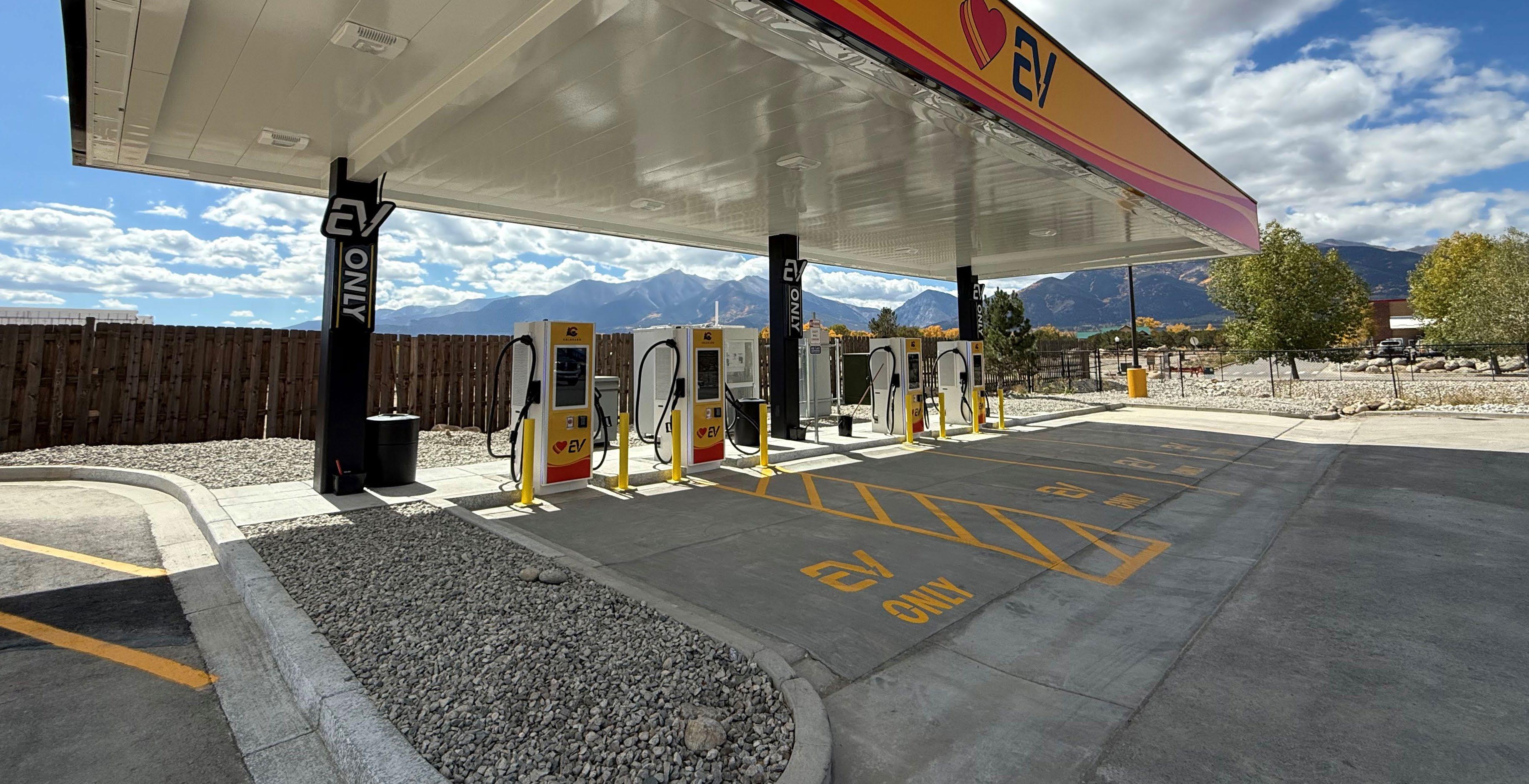
New Level III EV Charging in Chaffee County
Sangre de Cristo recently energized a new state-of–the-art Level III electric vehicle charging station at Love’s Travel Center in Buena Vista at its US Hwy 24 location.
Level III charging provides rapid charging capabilities, significantly reducing wait times for electric vehicle owners, compared to standard charging options.
Electric Era designed the charging system, which was installed by Sturgeon Electric of Denver. The battery storage component of the system represents
a forward-thinking approach to energy management. By storing energy during off-peak hours and releasing it during high-demand periods, the system helps keep demand on the local electrical grid consistent while ensuring reliable charging for users.
The charging station’s ideal location makes it an easy stop for local residents and travelers passing through Chaffee County. It has accessible features and offers highly competitive charging rates.
$ Rate Workshop $
Ever wonder how your electric rates are determined? We’d like to give you a look into the process!
Join us for lunch and a free educational workshop where you can learn exactly how SDCEA sets rates and explore what future rate options might look like. This is a great chance to get your questions answered directly by our team.
The workshop is free and open to all SDCEA members. We hope to see you there!
Location: Cliff Lanes, 25 Main St., Westcliffe
Date: November 13
Time: 12 p.m.
(Session previously held Oct. 9 in Buena Vista)
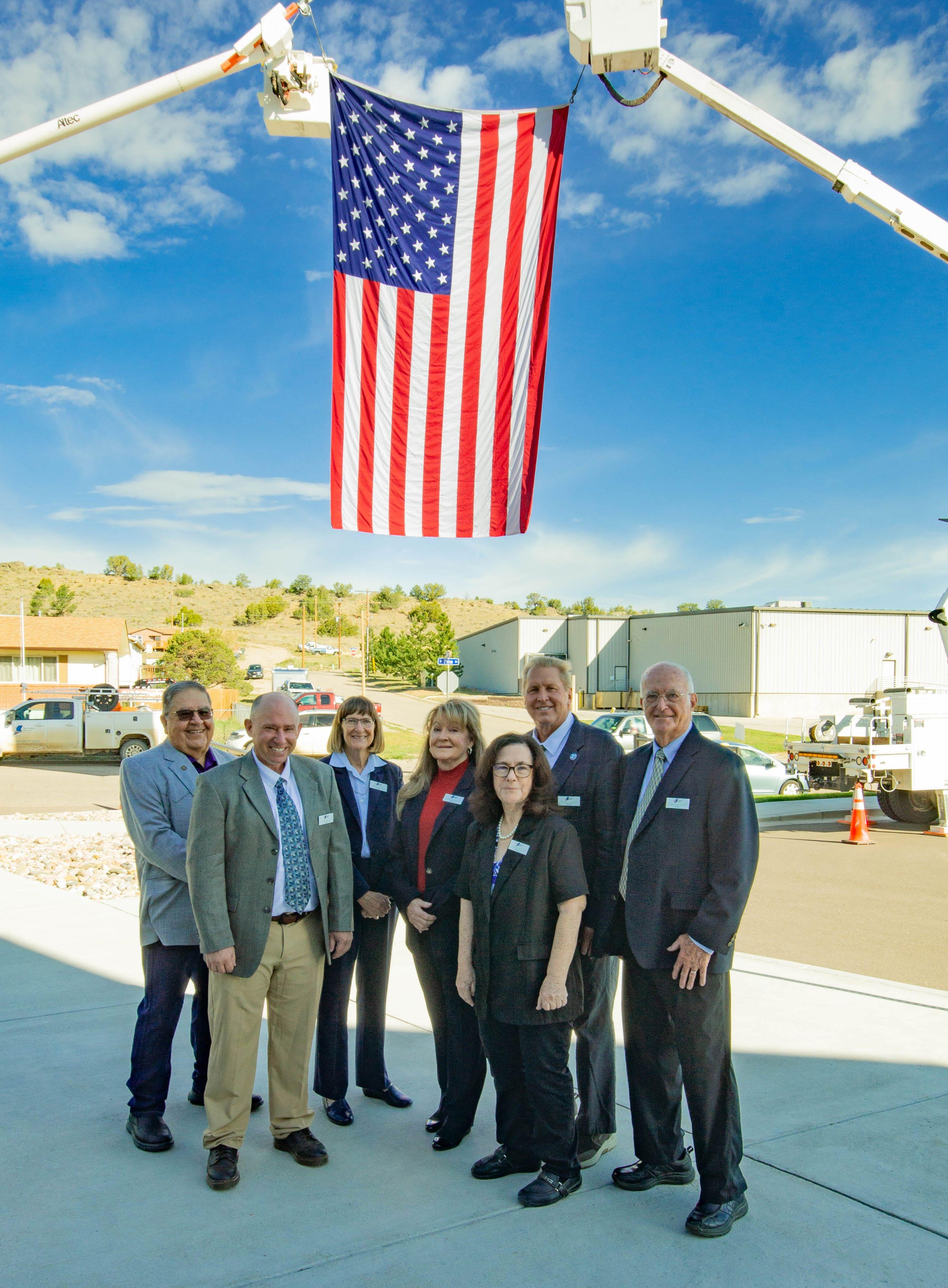

Changes are Coming to Your Electric Bill
By Ryan Elarton General Manager
There’s no such thing as fair. Fair is where you show your pig, right? Prices for food, medicine, fuel, clothing, and yes, electricity, don’t feel fair to anyone.
But costs are rising and we’re trying to manage the burden responsibly.
I don’t want to tell you that changes are coming to your electric bill. And you don’t want to hear it. But being transparent is part of our job as your co-op. We want you to know why changes are happening and what we’re doing to minimize the impact.
WHY ARE RATES CHANGING?
The short answer: it costs more to produce and transmit electricity than it did even a few years ago. Coal power plants are closing, new natural gas stations and solar farms are being built, and the transmission system that carries electricity to our communities must be upgraded. Regulations, fuel costs, and market prices are also changing. All of that adds up.
What makes us different from other utilities is our commitment to you. We exist for you and because of you. So, every dollar we collect is used to operate the utility or is returned to you and the communities we serve.
STEPS WE’RE TAKING TO MINIMIZE THE IMPACT ON YOU:
• Working with Tri-State, our power supplier, to plan ahead so new generation and transmission projects are added responsibly, avoiding unnecessary costs.
• Applying for system upgrade grants to keep reliability high while controlling expenses.
• Studying rate structures that may help us save on wholesale power costs and spread costs more equally among members.
That last point is important. We’ve hired an independent firm to conduct a rate study. They are reviewing how we buy power, how members use it, and whether changes to the way rates are structured could lessen the impact of higher overall costs on you. For example, some options being considered would
encourage shifting use away from hours when wholesale power costs are highest or an increase in the cost you pay per hour of electricity used. The study will help us identify the most cost-effective approach.
We’ll share the findings of the study, explain the options, and answer your questions during a rate hearing November 13. Decisions on what changes will be made and when they will go into effect will be announced in December.
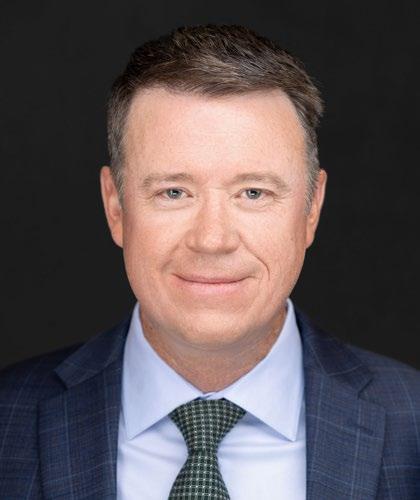
This isn’t an easy message to deliver, but being open with you is part of being your co-op. We’ll keep you updated and hope you join the conversation as we plan for the future.
NOTICE: RATE HEARING
Thursday, November 13 6 p.m.
Huerfano County Community Center 928 Russell Street Walsenburg, CO 81089
The San Isabel Electric Association, Inc. Board of Directors is hosting a hearing to discuss 2026 electric service rates with members. Any member may attend. A link to join the virtual meeting will be emailed November 10. Members may send comments on 2026 electric rates to contactus@siea.com or to 781 E. Industrial Blvd., Attn: General Manager, Pueblo West, CO 81007.
Purpose for adjustment: Costs of wholesale electric supply and infrastructure maintenance are increasing due to inflation and increased energy demand across the industry.
Annual Meeting Recap
More than 400 registered members filled Walsenburg Jr. Sr. High School with hugs, handshakes, and laughter at San Isabel Electric’s 87th Annual Meeting on Saturday, September 20. During the event, SIEA honored active duty and veteran service members, fed the crowd snacks and lunch, and presented information about the state of the co-op. Other than a slow lunch line, everyone had a great time. SIEA is already planning on ways to improve the lunch line flow at next year ’s meeting.
DRIVE CLEAN COLORADO EV SHUTTLE SERVICE
Drive Clean Colorado provided an electric vehicle shuttle service at the meeting. About 200 guests utilized the free shuttle rides between parking lots and the front of the school. The EVs were provided by area dealerships or are personal vehicles from DCC employees:
• Ford F-150 Lightning
• Hyundai Ioniq 5
• Volkswagen ID 4
• Chevy Silverado EV and Kia EV9 from Spradley Dealerships, Pueblo
• Ford Mustang Mach-E from Alpine Ford Nick Vigil also volunteered to drive Walsenburg Housing Authority’s 10-person passenger van, as he’s done in recent years to assist with shuttling guests back and forth.

GIFTS AND PRIZES
Meeting attendees were treated to a variety of gifts and giveaways. A total of 55 BINGO prizes — all purchased from small businesses within the cooperative’s service area — were distributed. Additionally, 20 $50 bills were handed out to lucky winners.
Each member also received a San Isabel Electric cap, a thermal tote bag, and a locally-crafted ceramic tray.
Thank you to all who helped us celebrate SIEA at the annual meeting. We look forward to seeing you next year.

their own money.

On the cover:
The San Isabel Electric Board of Directors.
Left to right: Edward Garcia, Gregory Costa, Doris Morgan, Jacque Sikes, Debbie Rose, Don Keairns, and Dennis Maroney. Photo by Chief Administrative Officer Gary Eitel
The San Isabel Electric Board of Directors.
The Annual Meeting grand prize — a free year of electricity capped at $1,500 — was awarded to Samuel and Sylvia Scerbo, two very hard-working philanthropists from Walsenburg. For many years, the couple shared the spirit of Santa and Mrs. Claus with local children by listening to Christmas wishes and giving them gloves purchased with
87 YEARS OF SERVICE
720 DONUTS
600 CONTAINERS OF COTTON CANDY
110 PIES
1,050 PIECES OF CHICKEN
18 GALLONS OF GREEN CHILI
3 HOURS TO SET UP
37 EMPLOYEES
140 TABLES
900 PEOPLE IN ATTENDANCE
Efficiency Updates
SIEA donates to energy projects at local senior center
After years of gathering in a near windowless building, local seniors now enjoy natural light and energy-efficient comfort at the brand-new South Central Council of Governments Elder Center, coincidentally located at 211 Elder Street in Walsenburg.
The new center provides congregate meals, home-delivered meals, public transportation, and in-home care services for seniors in Huerfano and Las Animas Counties. Information on legal assistance, workshops, and other resources are also available.
The contrast between the new and old facilities is dramatic. The Huerfano County Community Center hosted these services in the past. The community center was built when windows were seen as a hindrance to efficiency, and a security liability. The new senior space is airy and bathed in natural light, with plentiful windows and ceiling fans for ventilation.
Each window is either covered with energy-efficient cellular shades or roller shades. The shades and fans were funded by a $7,500 donation from San Isabel Electric Association’s Board of Directors and an equal matching donation by Basin Electric Power Cooperative. The cooperative’s donation also covered a 105-gallon commercial water heater and back-up generator for the new center. The bulk of the funding
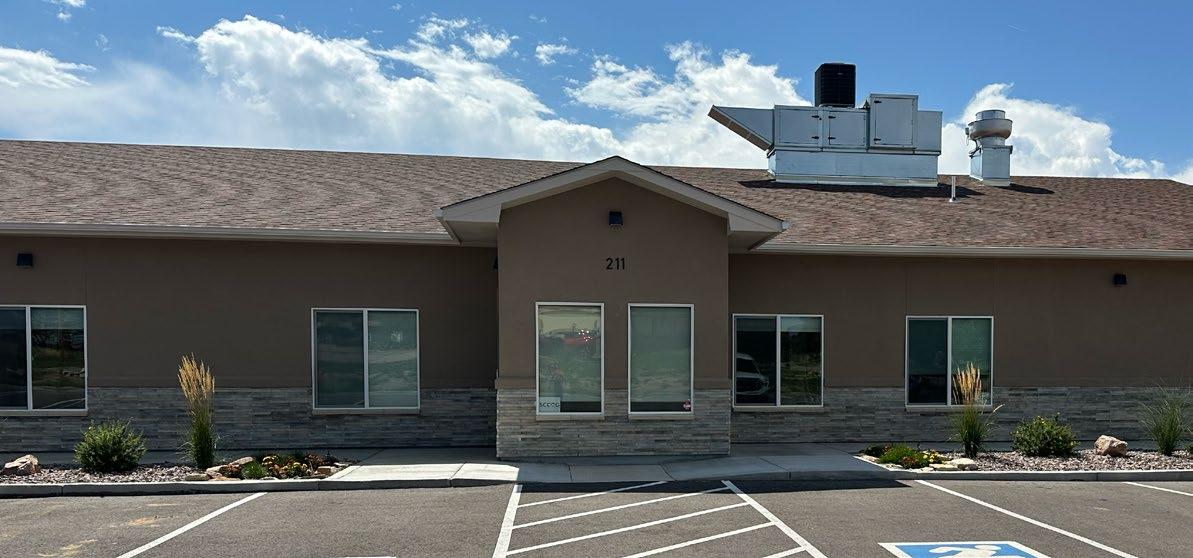
for the building was provided by grants from the State of Colorado.
The cellular shades, which were purchased from High Plains Flooring and Blinds, are made of pleated fabric folded to form a honeycomb structure. Air is trapped in the cell as well as between the shade and window, helping keep heat in during winter and out during summer, lowering energy costs.
The center’s six ceiling fans will also help reduce energy costs by allowing thermostat settings to be raised 4-7°F without sacrificing comfort.
“With these upgrades in place, the new senior center will spend less on utilities and more on programs that matter, ensuring the facility remains a lasting asset to the community,” SIEA Board President Jacque Sikes said.
SIEA provides donations for community projects such as the senior center from unclaimed capital credits, money the co-op cannot use for operating the co-op and must return to the community.
In addition to donating to projects like the senior center, the co-op also sells, installs, and offers low-interest on-bill financing for energy efficiency upgrades of all sizes. More information about available projects and financing is available at siea.com/empower.
San Isabel Electric operates under seven cooperative principles which includes practicing a Concern for Community. Each board member lives in the community they serve, and we all work together to help our communities thrive.
Each month, the Board of Directors donates to community projects to help keep our communities strong and growing. All philanthropic funding comes from unclaimed capital credits not from member rates and electric bills. Our process for
or other overhead costs. For more information about capital credits and unclaimed


The Season of Giving
By Mark Hall Interim Chief Executive Officer
As the holiday season approaches and the air turns crisp, we’re reminded that this truly is the season of giving. It’s a time for gratitude, generosity, and looking out for one another — and at Southeast Colorado Power Association, that’s something we take to heart year-round.
You’ve probably heard us talk about our concern for community. It’s not just a nice phrase, it’s one of the core principles that makes electric cooperatives like ours different from other utilities. We’re not just here to keep the lights on — though of course, we’re always working hard to do that. We’re here to make life better for the people we serve: our members, our neighbors, and our friends.
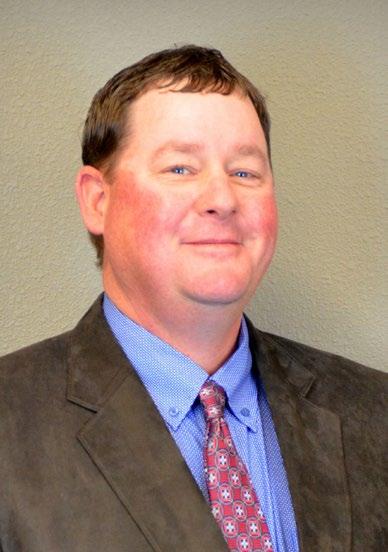
Over the years, we’ve faced challenges together, and every time, our co-op family has stepped up. We’ve come together to support those in need, to keep our community strong, and to build something better for the future. That spirit of generosity is never more evident than during the holiday season.
We’re also proud to support local students through the Youth Tour program, where we send some of our community’s brightest young people to Washington, D.C., to see democracy in action and dream big about their futures. That’s giving in the most meaningful way — by investing in tomorrow’s leaders.
And because we care deeply about safety, we also spend time visiting schools, fire departments, and law enforcement agencies throughout the communities we serve, holding demonstrations and teaching folks of all ages how to stay safe around electricity. We believe knowledge is a gift and we love sharing it.
You’ll also find our team out in the community beyond work, such as coaching youth sports, volunteering at local events, serving on nonprofit boards, and partnering with our local chambers of commerce to keep our area’s economy strong.
While the holiday season is a festive time, we understand these can be tough times for many. If you need tips on saving energy to reduce your energy bills,
want to explore payment plan options, or you simply have questions, please don’t hesitate to reach out. Southeast Colorado Power Association also offers several rebates on energy-efficient water heaters, heat pumps, electric motors, as well as other items. Please email rebates@secpa. com for more information. We’re here to help, not just during the holiday season, but all year long.
At Southeast Colorado Power Association, we believe concern for community is more than a value — it is the heart of who we are. From all of us at Southeast Colorado Power Association, we wish you and your loved ones a joyful, safe, and bright holiday season.

NEW MAILING ADDRESS
My Honor Flight
By Areta Blooding-Laird Southeast Colorado Power member
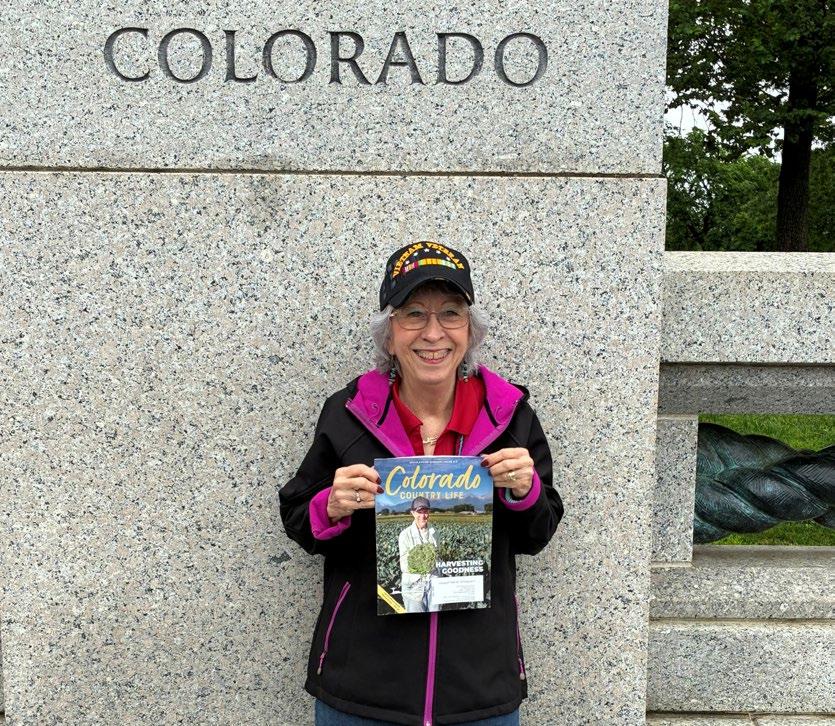
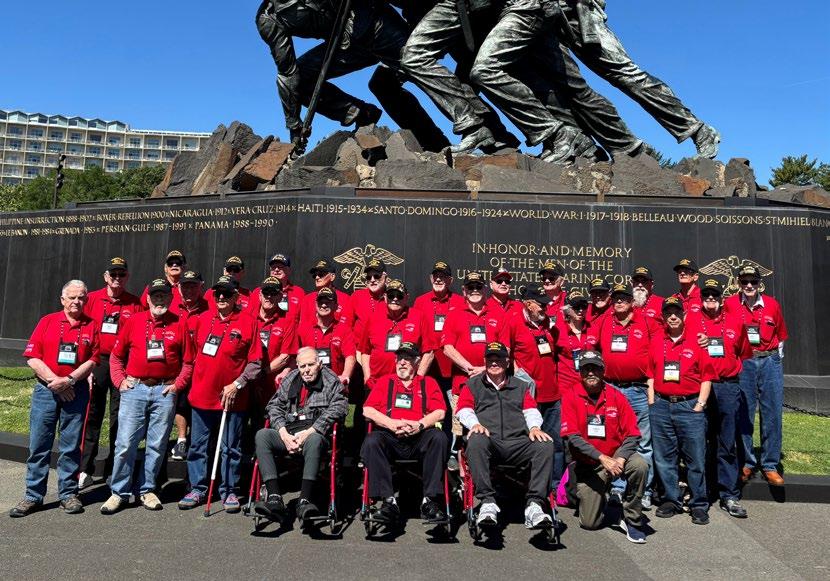
On May 8, I was part of a group of 30 United States Veterans who traveled to Washington, D.C., for Rocky Mountain Honor Flight #51. The group visited the World War II Memorial and the Navy Memorial, also called The Lone Sailor. The fountain of this memorial is said to contain water from all seven seas. We also saw the World War I memorial. These memorials were very impressive to see in person.
We toured the Korean War Memorial and saw “Freedom Is Not Free” etched into one wall. We took tracings of lost comrades at the Vietnam Memorial Wall. The Vietnam Women’s Memorial, dedicated November 11, 1993, honors the women who served and gave their lives in Vietnam.
The group also toured presidential memorials including the Lincoln Memorial and the Franklin Delano Roosevelt Memorial
At Arlington National Cemetery, we were honored to place a wreath on the Tomb of the Unknown Soldier and watch the changing of the guard.
I want to go back to Washington, D.C. and see everything we saw as we drove by on the bus. See photos from our trip at honorflightnorthercolorado.org.
Laird (middle row, fourth from right) travels to Washington, D.C., in May with a cadre of United States Veterans on an Honor Flight trip.
ACCEPTING PETITIONS FOR SECPA BOARD
SECPA board positions up for election in 2026 are District 4 –Eastern Las Animas & Western Baca County, District 5 – Otero County, and District 7 – Crowley County.
Director elections are for three-year terms, beginning April 2026 and ending March 2029.
To be eligible to be a director, a person: 1) must be a SECPA member and bona fide resident of the district he or she is to represent, 2) cannot be an employee or have been an employee of SECPA or its subsidiary within the preceding five years, and 3) cannot be employed by or financially interested in a competing enterprise or business selling electric energy or supplies to SECPA.
Petitions must be signed by 15 bona fide members in the nominee’s district and must be returned no later than 5 p.m. on January 5, 2026. Petitions are available in all SECPA offices or on the website at secpa.com/annual-meeting-elections
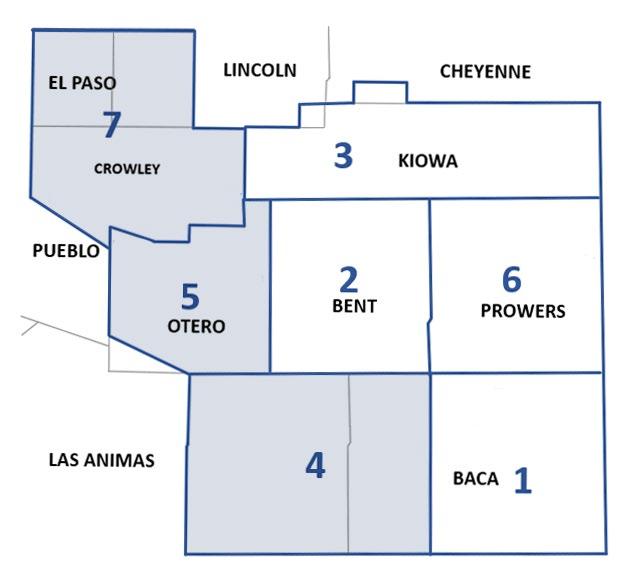
Return petitions to SECPA ATTN: Debbie Howard, 27850 Harris Road, Ste. A, La Junta, CO 81050 or email debbieh@secpa.com.
U.S. Navy and Navy Reserves Veteran Areta Laird, Eads, takes a photo with the magazine at the World War II memorial during her Honor Flight trip.
Comforting Veterans
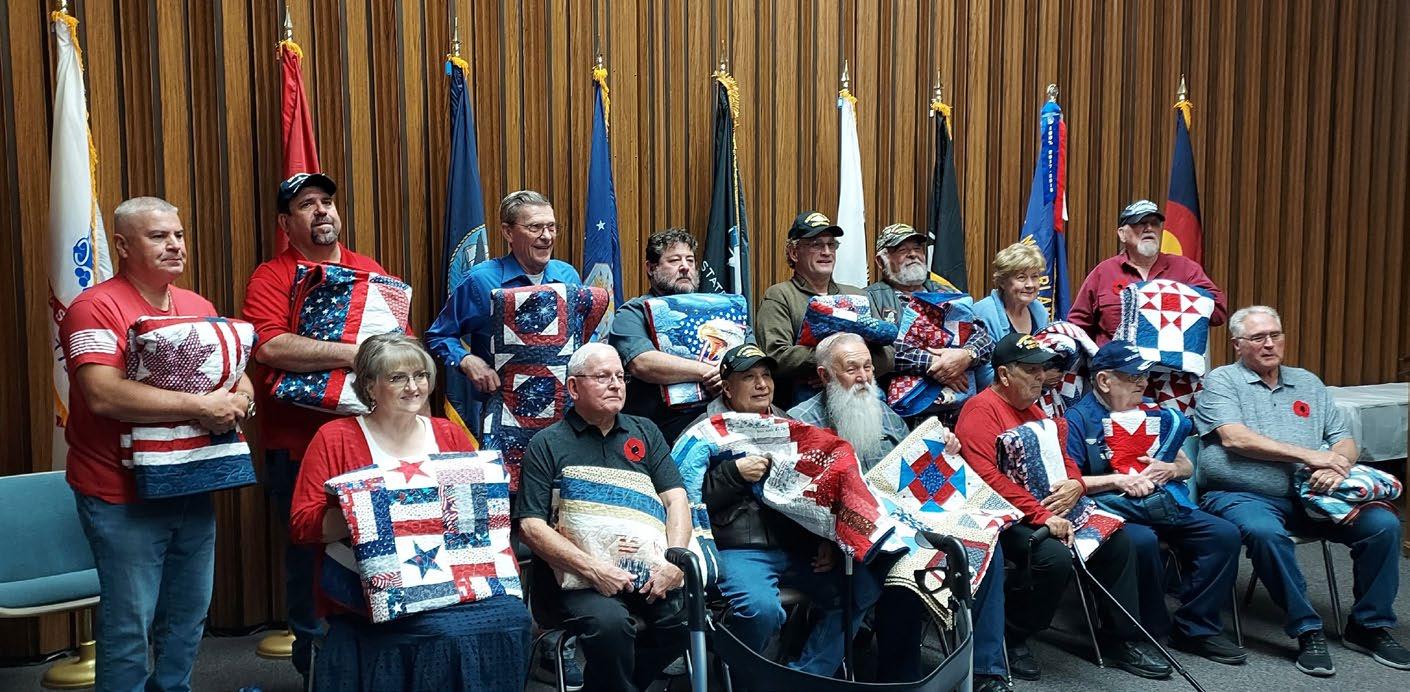

In a recent ceremony, United States Veterans from southeastern Colorado were each presented with a Quilt of Valor. These quilts were handmade by local volunteers, including SECPA members Carol Spady, Shawn Geist, and Danielle Berg.
The mission of Quilts of Valor — a national nonprofit — is to cover active service members and Veterans of the Armed Forces who have been touched by war with comforting and healing quilts. The organization believes these quilts equal healing.
A volunteer team donates their time and materials to make each quilt. One person pieces the top and another volunteer quilts it. Each Quilt of Valor must be large enough to cover an adult, made with quality materials, and be machine or handquilted. Quilts are individually labeled and includes the name of the Veteran it honors.
Donors can contribute fabric, batting, or other supplies to support the creation of Quilts of Valor. If you’d like more information about volunteering to sew a Quilt of Valor or if you would like to nominate a service member or Veteran to be the recipient of a quilt, visit qovf.org or contact Colorado Prairie Quilters by emailing rcspady@msn.com.
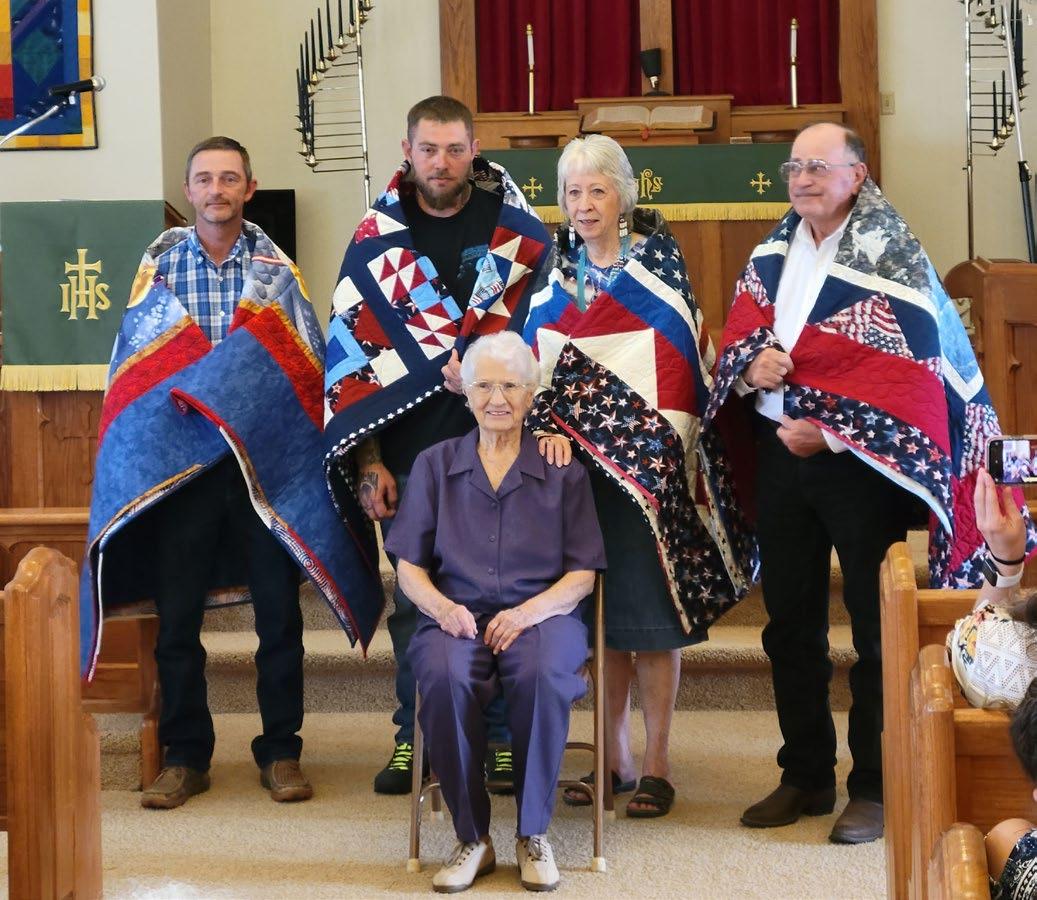
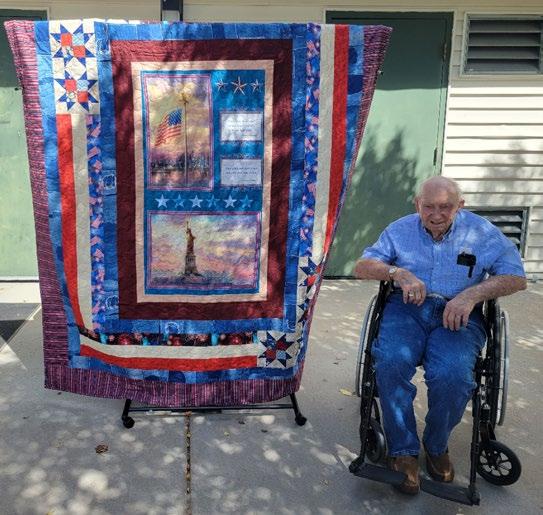
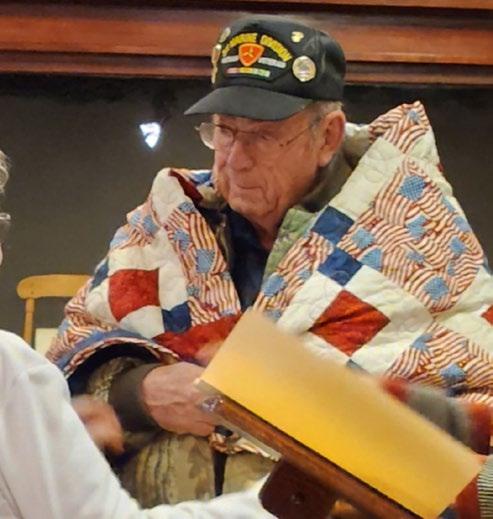
Local Veterans receive Quits of Valor. Standing (left to right) are Gabriel Mares, Brad Roe, Lynn Casebolt, Chris Dukes, Dave Loehr, Robert Trujillo, Shona Christensen and Rob Orill. Seated (left to right): Frances Smith, Rodney Gearhart, Jerry Barela, Edward Brown, Felix Reyes, Jerry Stover, Jerry Fisher.
Dan Morin from Olney Springs receives a Quilt of Valor.
Charles Hawkins from Bent County receives a Quilt of Valor.
Quilt of Valor recipient Doug Harbour from Prowers County.
Gloria Peck (seated) from Eads presents four quilts she made for area U.S. Veterans (left to right) Tim Green, Mike Walsh, Areta Laird, and Roland Sorenson.
Attention High School Juniors and Seniors
Win a trip to Washington, D.C., or a week at leadership camp at Glen Eden Resort
Each year, Southeast Colorado Power Association (SECPA) sponsors two students to attend the Electric Cooperative Youth Tour.
High school students who are 16 by June 1, 2026, AND whose families are SECPA members are eligible to apply for the trip. Youth Tour — held June 15-21, 2026 — provides students with an eight-day adventure that offers in-depth exposure to the electric cooperative network while exploring our nation’s capital. The selected students’ expenses, including airfare, lodging, meals, and all tour admission fees, are paid by SECPA. Activities during the trip include tours of the United States Capitol, the Washington Monument, the Lincoln Memorial, war memorials, Arlington National Cemetery, the National Archives, the White House, and Smithsonian Museums. Students will also enjoy a Potomac River dinner and dance cruise, visits with Colorado’s U.S. senators and representatives, and meet students from other electric cooperatives from around
ership Camp held at Glen Eden Resort, located just outside Steamboat Springs. At this
July 11-16, 2026, students from Colorado, Kansas, Oklahoma, and Wyoming will gather at a scenic mountain resort on the Elk River and spend the week at an outstanding leadership camp. Campers improve leadership skills and get an inside view of how cooperatives are run. There is also time for swim parties, barbecues, whitewater rafting, volleyball, and dancing. Many of the attendees call this camp a life-changing experience.





BOARD DIRECTOR ELECTION
SECPA board positions up for election in 2026 are District 4 –Western Baca & Eastern Las Animas County, District 5 – Otero County, and District 7 – Crowley County. Thursday, April 23, 2026 (tentative) Baca County Fairgrounds, Minnick Building Springfield, Colorado

The Season of Giving
By Trent Loutensock General Manager
As the holiday season approaches and the air turns crisp, were reminded that this truly is the season of giving. It is a time for gratitude, generosity, and looking out for one another — and at Y-W Electric Association, Inc., that is something we take to heart year-round.
You have probably heard us talk about our concern for community. It is not just a nice phrase; it is one of the core principles that makes electric cooperatives like ours different from other utilities. We are not just here to keep the lights on — though of course, we are always working hard to do that. We are here to make life better for the people we serve: our members, our neighbors, and our friends.

Over the years, we have faced challenges together, and every time, our co-op family has stepped up. We have come together to support those in need, to keep our community strong, and to build something better for the future.
We work closely with our local schools to provide education materials, award college scholarships, and sponsor youth groups. Y-W Electric participates in the annual Electric Cooperative Youth Tour where we take our community’s brightest young people to Washington, D.C., for a weeklong immersion to experience democracy in action. We also select students for the Cooperative Youth Leadership Camp. Both trips are inspirational for many students, and we are

both humbled and honored to be a part of their leadership development journey. Ultimately, the larger community benefits from these programs because of you. You empower the co-op through your membership and through your participation in and support of these programs.
And because we care deeply about safety, we also spend time visiting schools, local first responder agencies, and other community groups to hold electric safety demonstrations. We spend those visits teaching folks of all ages how to stay safe around electricity. We believe knowledge is a gift and we love sharing it.
You will also find our team out in the community beyond work coaching youth sports, volunteering at local events, serving on nonprofit boards, and partnering with our local chambers of commerce to keep our area’s economy strong.
While the holiday season is a festive time, we understand these can be tough times for many. If you need tips on saving energy to reduce your energy bills, want to explore payment plan options, or you simply have questions, please do not hesitate to reach out. We are here to help, not just during the holiday season, but all year long.
At Y-W Electric, we believe concern for community is more than a value — it is the heart of who we are. From all of us at Y-W Electric, we wish you and your loved ones a joyful, safe, and bright holiday season.
Each month, Y-W Electric Association offers its members a chance to earn a $20 credit on their next electric bill. If you find your name and account number in this magazine, call 800-660-2291 and ask for your credit. It could not be easier.
Get acquainted with your account number, read your Colorado Country Life magazine, and pick up the phone. You must claim your credit during the month in which your name appears in the magazine — check the date on the front cover.
Congratulations to Dayton and Megan Drullinger who found their name in the September issue and called to claimed their $20 bill credit.
Should I Use a Space Heater?
Drafty room? Before reaching for your space heater, consider whether it is better to plug it in or simply turn up the thermostat. Space heaters are designed to warm small, targeted spaces — not your entire home. If you find yourself relying on one often, it may be time to address your home’s energy efficiency.
FIX EFFICIENCY FIRST, THEN SUPPLEMENT WITH A SPACE HEATER
Improving your home’s efficiency helps it retain heat, reduces drafts, and reduces your energy use. Many solutions are affordable and easy to do yourself, such as:
• Seal air leaks. Use caulk and weather stripping around windows and exterior doors to prevent drafts. [Paul and Nancy Smith 5911XXXXX]
• Add insulation where it matters. Attic insulation has the biggest return on investment, and loose-fill insulation is an affordable option.
• Check your heating system. Schedule regular service for your furnace or heat pump. If it is outdated or struggling, it could be time for an upgrade. Check with your utility for potential rebates and incentives.
• Use programmable thermostats. These can help reduce energy waste by heating only when and where needed.
Once your home is sealed and insulated, a space heater can be used to increase comfort and warm specific rooms, like a home office or bedroom,

without turning up the heat for the whole house. A space heater is like a ceiling fan: it can improve comfort in a small area, but it is not a wholehouse solution.
USE SPACE HEATERS EFFICIENTLY
• Heat only the room you are currently in.
• Close doors to keep heat contained.
• Choose the right size — too small and it will not warm you; too big and it wastes energy. Check manufacturer sizing guides.
• Use a space heater with a thermostat and timer to avoid overheating the room or wasting electricity.
STAY SAFE WHILE STAYING WARM
• Place the heater on a solid, flat, nonflammable surface — never on carpets or rugs.
• Plug the heater directly into the wall outlet. Never use extension cords or power strips.
• Keep children, pets, and anything flammable, such as curtains or bedding, at least 3 feet away from the heater.
• Never leave a space heater unattended, especially around children or pets.
• Always turn off the heater when you leave the room or go to sleep.
• Unplug heaters when not in use to prevent electrical hazards. [Mason King and Brenda Drullinger 6904XXXXX]
• Choose a space heater with built-in safety features including an overheat sensor, tip-over shutoff switch, and a safety certification label such as UL.
BILLING CORNER
MEMBER INFORMATION
Having accurate information for each of our members is vital. On occasion, Y-W Electric Association will have planned outages to repair equipment affecting our members in a specific area. When this occurs, we will use Facebook or phone calls to notify the members in the area affected. Unfortunately, we are finding that many of the phone numbers we have on file are incorrect. The main member phone number is printed on billing invoices. If this is not the number at which you want to be contacted, or if it is incorrect, please contact the Y-W Electric office to update it. [Lyndsey Blach 6302XXXXX]

Attention High School Juniors!



If you are interested in an intriguing, all-expenses-paid experience this summer, please obtain and fill out an application for Cooperative Youth Leadership Camp and the Electric Cooperative Youth Tour. The application deadline is December 18, 2025.
ELECTRIC COOPERATIVE YOUTH TOUR
The winner will join other students from Colorado co-ops and from co-ops across the United States June 15-21, 2026. [Clint and Brook Spradlin12308XXXXX]
A week of activities begins in Denver on June 15. Students will visit our state capitol building before heading to Washington, D.C. Once there, students will meet many of our Colorado congressional members and learn about electric cooperatives and the issues facing the electric industry today. Students will also learn about the legislative process. There will be plenty of time for fun and touring. Attendees will visit Mount Vernon, the National Cathedral, the Holocaust Memorial Museum, Arlington National Cemetery, and the Library of Congress. They will stroll through the Smithsonian museums, visit the monuments
and memorials, and much more. An evening at the theater and a cruise on the Potomac River are also included in this once-in-a-lifetime experience.
YOUTH LEADERSHIP CAMP
From July 11-16, 2026, about 100 students chosen and sponsored by rural electric cooperatives from all over Colorado, Kansas, Wyoming, and Oklahoma attend Cooperative Youth Leadership Camp. The camp is designed to provide a better understanding of cooperatives, energy prices, power generation, and the rural electric cooperative program. It also focuses on developing leadership skills to help students handle the challenges of the future. The camp, run by the students, is a lot of fun and provides an excellent learning experience.
Field trips are planned to tour a large open-pit coal mine and an electric generation power plant. There is also time for fun and sightseeing. Free time is spent playing volleyball, swimming, whitewater rafting, dancing, a banquet, and meeting many new friends.
All expenses for Cooperative Youth Leadership Camp and the Electric Cooperative Youth Tour are covered by Y-W Electric. The parent or guardian of the applicant must be a member of Y-W Electric and/or directly receive electric power from Y-W Electric. The selection process is conducted like a job interview.
• The application is available on our website at ywelectric.coop Apply by December 18, 2025.
• For more information, please see your guidance counselor or call Andy Molt at Y-W Electric at 970-345-2291.
With the holiday season approaching and more time spent in the kitchen, consider ways to save energy in the heart of your home. When possible, cook meals with smaller, energy efficient appliances, such as toaster ovens, slow cookers, and air fryers. When using the range, match the size of the pan to the heating element. Keep range-top burners and reflectors clean so they reflect heat more efficiently. After your holiday meals are complete, load the dishwasher fully before starting the wash cycle.
Source: energy.gov
Don’t Miss Out on Scholarships
Apply
for
a Y-W Electric Association scholarship for 2026
APPLY BY JANUARY 29, 2026 TO COMPETE FOR THE FOLLOWING SCHOLARSHIPS
• Y-W Electric* $1,000/year scholarship, renewable up to $4,000
• Y-W Electric* $1,000 scholarship Basin Electric Power Cooperative $1,000 scholarship
Y-W Electric* $500 scholarship
• Y-W Electric* $500 continuing education scholarship
• Tri-State Generation and Transmission $500 scholarship
• Y-W Electric* $1,000 line technician training scholarship
*Y-W Electric scholarships are funded by the Unclaimed Capital Credits Account
TO QUALIFY FOR A SCHOLARSHIP
Your parents or guardians must receive electric service from
• You must be a graduating student from a local high school or approved homeschool program or be a continuing college student You must maintain full time resident student status
• Semesters must be continuous excluding summer
• You must provide copy of your grade transcript to Y-W Electric at the end of each semester to receive renewable funding for specific
• You must maintain minimum GPA requirements Applications are available on ywelectric.coop [Jesus Gonzalez Jr. 27330XXXXX]
• NEW THIS YEAR: All applications must be completed through the online application portal. No paper applications will be accepted.
• All applications must be completed by January 29, 2026.
For more information, please see your guidance counselor or call 970-345-2291 and speak to Andy Molt at Y-W Electric.

Graduate
Dymchenko/iStock/Getty
